#ancient female poets and historical literature
Explore tagged Tumblr posts
Photo

Enheduanna, the World's First Author Known by Name
This lesson introduces students to Enheduanna, an important but lesser-known female poet and her contributions to literature and history. Students will also consider how the role of women in history might change in various times and locations.
Complete Lesson
One class period needed. It could be the first of a three-period sequence on ancient female poets, utilizing all three parts of the World Poetry Day video.
Essential Questions
Who was Enheduanna?
What contributions did she make to Ancient Mesopotamia?
Objectives
Improve reading fluency and comprehension of an encyclopedia article
Integrate and evaluate multiple sources of information presented in diverse formats and media
Examine historical artifacts
Includes
Lesson plan
Worksheet
Map
Illustrations
Answer keys
Continue reading...
63 notes
·
View notes
Text
Some of my favourite terminology for sex, sexuality, and gender that have mostly fell out of use:
Sapphist: Similar to the term Sapphic which is still in use, derived from the woman loving Greek poet Sappho. The -ist has implications of doing rather than being. A Sapphist is a woman who has romantic and sexual relationships with other women. It was commonly used in the 19th and early 20th century, eventually replaced by lesbian in common usage. Some famous historical figures who used this term include Vita Sackville-West, who also used the terms lesbian and homosexual.
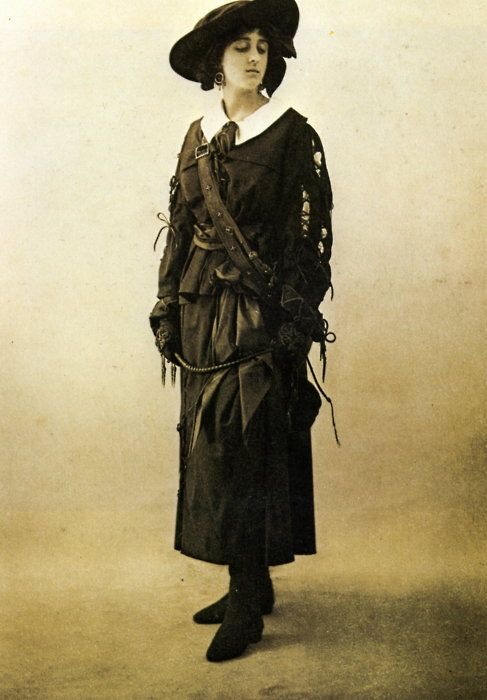
Mukhannathun: Translates roughly to "effeminate ones" or "ones who resemble women", typically refers to a feminine male, an intersex person, or one whose sex is indistinct. Modern scholars place the term Mukhannath in correlation with trans feminine. Mukhannathun traditionally took on the social roles of women in Saudi Arabia and feature in Ḥadīth Islamic literature. They were often musicians and entertainers, Abū ʿAbd al-Munʿim ʿĪsā ibn ʿAbd Allāh al-Dhāʾib (or Tuwais) being perhaps the first famous Mukhannath musician. I could not find any depictions of Mukannathun.
Invert: Sexology in the early 20th century believed that same sex desire and cross gender identification were natural in some people. It was coined in German by Karl Friedrich Otto Westphal (1833-1890) and translated across Europe and eventually into English as sexual inversion by John Addington Symonds Jr. (1840-1893) in 1883. Inverts were people whose natural sex instinct (heterosexual, cisgender) were "inverted", causing a natural desire for the same sex or to live as the other sex. It was thought that most inverts desired a relationship with a "normal" member of their own sex, for example a masculine presenting woman would desire a feminine presenting "normal" woman, a feminine presenting man would desire a masculine or "normal" man. While most sexologists thought sexual inversion was natural, they worried about corruption of "normal" people by inverts. The writer 'John' Radclyffe Hall (1880-1943) identified as an invert and explored the life of inverts in her 1928 novel The Well of Loneliness.
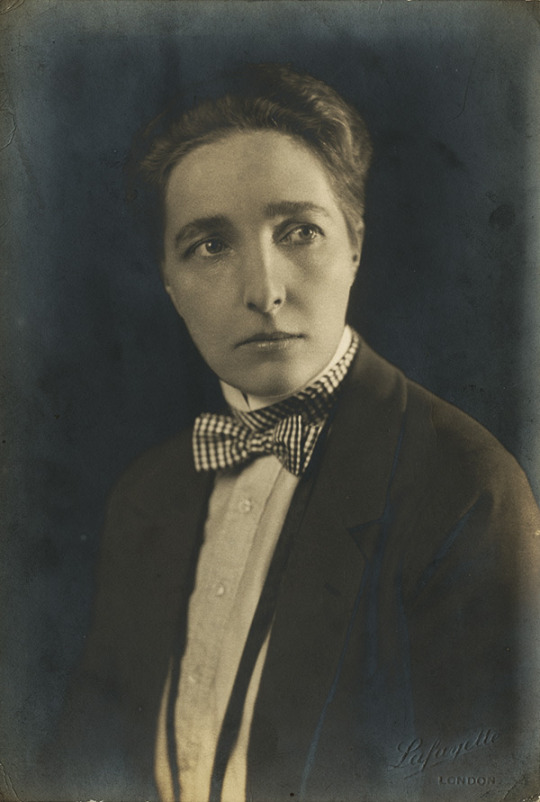
Uranism: A Uranian was a man who was romantically or sexually interested in other men. One of the earliest records of the term comes from Friedrich Schiller's 'Sixth Letter' in the Aesthetic Education of Man in 1795. It is derived from the ancient Greek goddess Aphrodite Urania, a manifestation of Aphrodite who was free of physical desire and instead was attracted by mind and soul. Ancient Greek literature was very important in the early formations of queer identity and self-recognition. Oscar Wilde (1854-1900) was known to use the term Uranian.
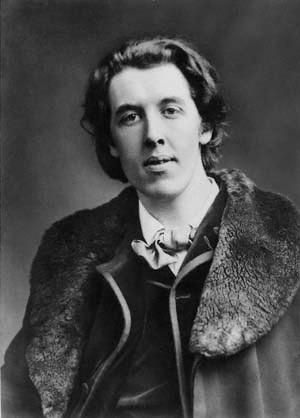
Tribadism: Derived from the Greek "tribas" which means "to rub", tribadism denotes both a sexual position (now known as tribbing or scissoring) and a woman who seeks to sexual dominate and/or penetrate another woman. This term could also be used to describe an intersex person who lives as female and is the penetrating partner during sex with women. It became the most common word to describe any kind of sexual intimacy between women in English literature from the 16th to 19th centuries. Marie Antoinette, queen of France from 1773 to 1792 was "defamed" in many anti-monarchist newspapers as being a tribade.

Eonism: Eonism was coined by English sexologist Havelock Ellis (1859-1939) to describe cross gender identification and presentation. "Eon" after the French diplomat Charlotte-Geneviève-Louise-Augusta-Andréa-Timothéa d'Éon de Beaumont, who was assigned male at birth but lived as a woman from 1777 until her death in 1810. Eonism was later replaced by transvestism in popular usage in the early to mid 20th century, coined by Magnus Hirschfeld (1868-1935) in 1910.
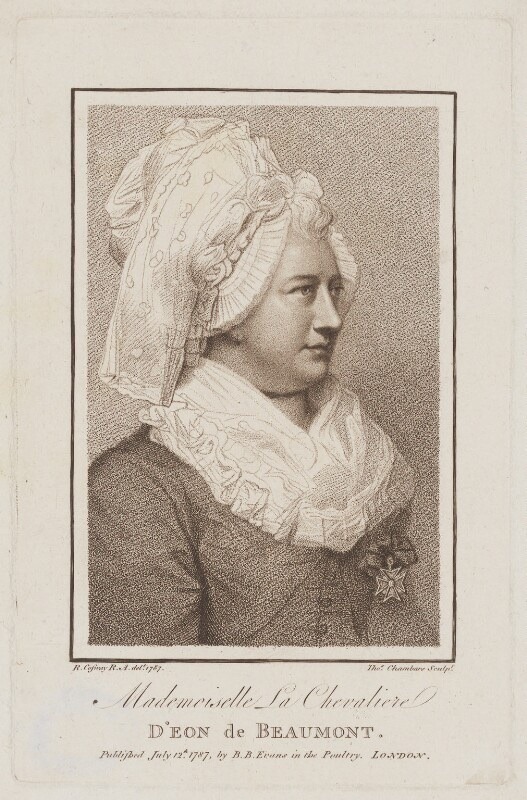
Eunuch: the term Eunuch has many connotations but the one common factor that almost all definitions share is that a eunuch is an intentionally castrated male. Eunuchs can also be uncastrated, but put into the social role as eunuch due to their 1) feminine presentation 2) inability to procreate 3) attraction to men. Eunuchs were not seen as men in most cultures, they were specifically chosen and castrated in order to fill a specific, separate social role from men and women. It was sometimes punitive, for example under Assyrian law men who were caught in sexual acts with other men were castrated. Eunuchs often had positions in royal households in the Ancient Middle East, their sexlessness was seen to enhance their loyalty to the crown as they were less likely to be distracted by sex or marriage, and it also allowed for jobs to be given on merit, and not inherited since Eunuchs could not reproduce. In Ancient Greece certain sects of male priests were eunuchs. China had Eunuchs who were fully castrated (penis and testicles) and high ranking in imperial service. In Vietnam, many eunuchs were self castrated in order to gain employment in the royal households.
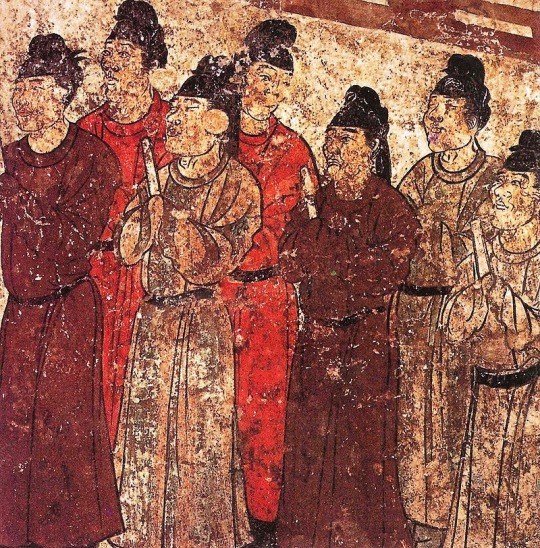
Homophile: coined in 1924 by Karl-Günther Heimsoth (1899-1933) in his dissertation Hetero- und Homophilie. The term was in common use in the 50s and 60s in gay activism groups. It was an alternative to homosexual coined in 1868 by Károly Mária Kertbeny (1824-1882) which was thought to have pathological and sexual implications, whereas homophile prioritised love and appreciation over the sex act or pathology. It is still in use in some parts of northern Europe. The Homophile Action League was founded by lesbian couple Ada Bello (1933-2023) and Carole Friedmann (1944-?) in Pennsylvania, U.S.A. in 1968, a year before the Stonewall Riots.
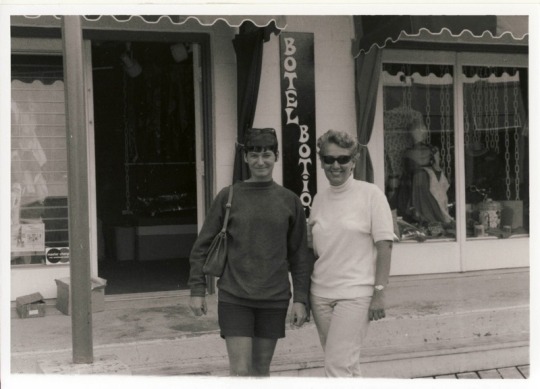
118 notes
·
View notes
Text
Emily Windsnap characters name meaning
Emily: The Latin origin of the name Emily comes from the feminine version of "Aemilius," "Aemilia." Emily is frequently understood to mean "eager" or "rival." (which matches Emily's spirit of adventure and competes with the competition between her and Mandy.) Throughout history, Emily has been a popular name, especially in literature. Emily Dickinson, a significant American poet renowned for her distinct style and contemplative subjects, is one of the notable individuals. Emily Brontë, the author of the beloved book "Wuthering Heights," is another important person. I always have head-canon books that have Emily writing her own biography about her adventures, demonstrating her love of English. Emily turns into a writer and author.) "In some folklore traditions, names carry specific meanings or attributes that influence a person’s destiny. While not directly tied to any mythological tales about an individual named Emily, it can be said that those who bear this name may be seen as destined for creativity or leadership roles based on historical associations."
Last name Windsnap: Wind, a symbol of freedom and movement, is often personified in mythologies as a powerful force. The term "windsnap" implies quickness or suddenness, suggesting agility. These themes are often used in creative works to evoke imagery and character identifiers, enhancing world-building.
Mary P: In the Bible, the name Mary is most prominently associated with Mary, the mother of Jesus. The name itself is derived from the Hebrew name Miriam, which carries meanings such as “beloved,” “bitter,” or “rebellious.” (Mary, being Emily's mother, gave birth to the hero of the story, Emily. She also seemed to be rebellious and free-spirited when she was younger, meeting Jake, her being "beloved by Jake," and bitter about her fear of water because of the memory drug losing her husband for 12 years.) The name Penelope may derive from the Greek word “penelops,” which translates to “duck” or refers to a type of waterfowl that was sacred to the Ancient Greeks. This connection to waterfowl could symbolize adaptability and nurturing qualities. Another interpretation suggests that it comes from the Greek roots “pene,” meaning “web,” In the Odyssey, Penelope embodies loyalty and patience. Similar to Penelope’s unwavering loyalty to Odysseus during his long absence, Mary P demonstrates loyalty to her friends throughout the series. While Penelope waits for Odysseus, cleverly navigating challenges posed by suitors, both Penelope and Mary P represent aspects of female agency within their respective narratives. Penelope’s intelligence is highlighted through her cunning plans.
Jake: Much like biblical Jacob’s loyalty to his family (despite his initial deceit), Jake Windsnap demonstrates unwavering support for Emily throughout their adventures. fluidity, and emotional depth—qualities that resonate with the essence of the name Jake. The connection to water aligns with mythological interpretations where water often symbolizes transformation.
3 notes
·
View notes
Text
What is Sapphic Poetry?
Sapphic poetry, named after the ancient Greek poet Sappho, is a distinctive and influential form of poetry that originated in the 6th century BCE. It is characterized by a particular meter known as the “Sapphic stanza,” which combines lines of various lengths and rhythmic patterns to create a lyrical, flowing style. Sappho’s poetry, often focused on themes of love, desire, and personal reflection, has had a profound impact on Western literary traditions and continues to inspire poets today.
This article explores the origins of Sapphic poetry, its defining characteristics, its influence on later poets, and the ways in which contemporary writers have interpreted and adapted the Sapphic form. We will also examine the life of Sappho, whose works form the foundation of this poetic tradition, and discuss how her unique voice shaped the development of this genre.

The Origins of Sapphic Poetry
Sapphic poetry takes its name from Sappho of Lesbos, one of the earliest known female poets in Western literature. Sappho lived on the island of Lesbos in Greece during the 6th century BCE. Little is known about her life, but her poetry has survived in fragments, and she is often regarded as one of the greatest lyric poets of ancient Greece.
Her work is known for its emotional depth and personal nature, often focusing on the themes of love, passion, and longing. Sappho wrote in a dialect of ancient Greek known as Aeolic, and much of her poetry was meant to be sung, accompanied by the lyre. Her influence has been so profound that the term “Sapphic” not only refers to her specific style of poetry but also to themes of female homoeroticism, given the nature of many of her surviving works.
Who Was Sappho?
While much of Sappho’s biography is speculative, historical sources suggest that she was part of an aristocratic family on the island of Lesbos. It is believed that she was involved in leading a group of women devoted to the arts and worship of the goddess Aphrodite, the deity associated with love and beauty. Sappho’s poetry, much of which is lost, was revered in the ancient world for its intimacy and emotional power.
Sappho’s reputation was such that Plato referred to her as the “tenth Muse.” While only fragments of her work remain today, those fragments offer a glimpse into her genius, focusing on personal feelings, particularly love and desire, rather than the grand, epic themes that dominated much of Greek poetry during her time.
The Sapphic Stanza
The defining feature of Sapphic poetry is the Sapphic stanza, a metrical form that Sappho is credited with developing. This stanza consists of four lines: three longer lines, followed by a shorter one known as the Adonic line. The structure is as follows:
Three lines of 11 syllables each, with a specific metrical pattern.
One final line of 5 syllables, known as the Adonic line, which follows the pattern of one dactyl (one long syllable followed by two short syllables) and one trochee (one long syllable followed by one short syllable).
Here’s a visual breakdown of the meter:
First three lines: – u – x | – u – x | – u u – u
Fourth line (Adonic): – u u | – u
In these notations, a “–” represents a long syllable, a “u” represents a short syllable, and an “x” represents a syllable that can be either long or short.
The Sapphic Meter
Sapphic meter is structured and rhythmic, combining lyricism with strict rules of syllable length and stress. This form lends itself well to personal, emotional expression because of its musicality and fluidity. The alternating pattern of long and short syllables creates a dynamic flow, while the use of the Adonic line at the end of each stanza serves as a rhythmic conclusion, offering a brief but powerful closing note to each verse.
While Sapphic meter is highly structured, it allows for considerable flexibility in terms of tone and theme. Poets can explore a wide range of subjects, but the meter’s emphasis on musicality and rhythm makes it particularly suited to lyrical expressions of emotion, such as love, desire, and introspection.
Examples of Sapphic Meter
One of the most famous examples of Sapphic poetry, albeit in translation, comes from one of Sappho’s surviving fragments, often titled “Hymn to Aphrodite.” While the original Greek adheres strictly to the Sapphic meter, modern translations often adjust the syllable count and rhythm to capture the spirit of the poem in different languages. The following is a translation of a fragment:
“Come to me now, O holy Aphrodite, Freed from your mortal weariness, your golden Chariot, yoked with doves, through the wide heaven Drawn on the breezes.”
Although translations may not always retain the exact meter of the original, the emotional depth, lyrical quality, and thematic focus on love and longing remain central to Sappho’s poetic style.
Themes in Sapphic Poetry
Sappho’s poetry is often focused on themes of personal emotion, love, and desire, which set her apart from many of her contemporaries, who wrote more about epic battles, gods, and heroes. In Sappho’s work, the emotional experience is central, and her poems often reflect deeply personal experiences.
1. Love and Desire
One of the most recurring themes in Sapphic poetry is the exploration of love, often unrequited or filled with longing. Her poems frequently express a yearning for connection, particularly with other women. Sappho’s expressions of desire are candid and tender, exploring the pain, joy, and complexity of love.
This focus on personal emotion, particularly romantic and erotic love, was rare in the ancient world, where most poetry concentrated on heroic deeds and public life. Sappho’s focus on the interior emotional world was groundbreaking and has influenced countless poets throughout history.
2. The Divine and Nature
In addition to love, Sappho’s poetry often invokes the divine, particularly the goddess Aphrodite. Sappho’s relationship with Aphrodite, the goddess of love and beauty, is one of personal devotion, and many of her poems are hymns or prayers directed toward the goddess.
Sappho also wrote about nature, often using natural imagery to mirror human emotions. Flowers, birds, and the sea frequently appear in her poetry, symbolizing various aspects of love, beauty, and transience.
3. Female Experience and Friendship
Sappho’s poetry offers rare insight into the lives and relationships of women in ancient Greece. Many of her poems focus on her relationships with other women, including romantic love, friendship, and mentorship. The island of Lesbos, where Sappho lived, was home to a community of women involved in the arts, and Sappho’s poetry often reflects the deep emotional connections she had with these women.
4. Passage of Time and Loss
Sappho also wrote about the passage of time and the inevitability of loss. Many of her poems reflect on aging, the fleeting nature of beauty, and the sorrow of lost love or separation. These themes give her work a melancholic tone, but they also highlight the intensity and transience of human experience.
Influence of Sapphic Poetry
The influence of Sapphic poetry is far-reaching, extending beyond ancient Greece and into modern times. Sappho’s work has inspired poets and writers for centuries, and the Sapphic stanza has been adopted and adapted by many.
Classical Influence
In antiquity, Sappho’s influence was widespread. Poets such as Alcaeus and Anacreon drew inspiration from her lyricism and emotional depth. The Roman poet Catullus adapted the Sapphic stanza in his own works, blending the Latin language with the Greek meter to create poems that carried Sappho’s lyric spirit into Roman literature.
Influence on Renaissance and Romantic Poets
During the Renaissance, interest in classical Greek literature was revived, and poets across Europe began to explore Sappho’s works once again. Many writers of the period admired her style and themes, particularly the exploration of personal emotion and desire.
The Romantic poets, in particular, embraced Sappho’s intense emotionalism and lyricism. Writers such as Lord Byron and Percy Bysshe Shelley looked to Sappho as a model for writing about love, nature, and the sublime. In Shelley’s poem “Sappho,” he reflects on her legacy and the way her emotional depth transcends time.
Sapphic Poetry in Modern Times
In the 19th and 20th centuries, poets such as Algernon Charles Swinburne, Ezra Pound, and H.D. (Hilda Doolittle) revived the Sapphic form in their own work. H.D., in particular, was influenced by Sappho’s fragmented style and lyrical intensity, drawing on the ancient poet’s themes of love, beauty, and loss in her own modernist verse.
The Sapphic form continues to be influential today, with many contemporary poets adopting or adapting the Sapphic stanza to explore themes of love, gender, and identity.
Sappho’s Legacy: Sapphic Love and Modern Interpretations
In addition to her formal contributions to poetry, Sappho’s legacy extends to her exploration of female desire, particularly same-sex desire. The term “Sapphic” has come to be associated with romantic and erotic relationships between women, thanks to the themes explored in her poetry.
Though Sappho’s works do not explicitly focus on homosexuality in the modern sense, her candid expressions of love for women have been interpreted as significant representations of female desire. Over the centuries, Sappho has become a symbol of female homoeroticism and a central figure in LGBTQ+ literature and history.
Conclusion
Sapphic poetry is a lyrical and emotionally rich form of poetry, deeply rooted in the ancient traditions of Greece but also possessing timeless qualities that have resonated with poets and readers throughout history. Through the Sapphic stanza, Sappho created a unique poetic structure that allowed for intense personal expression, making her one of the most celebrated poets in literary history.
Sappho’s exploration of love, desire, friendship, and loss continues to inspire poets today, and the term “Sapphic” has evolved to symbolize both a poetic form and a broader cultural understanding of female relationships and desire. Sapphic poetry remains an essential part of the poetic tradition, bridging the gap between ancient and modern expressions of the human experience.
0 notes
Text
Women in art - history series (very long ago)
Asia
China
Ancient Chinese society was patriarchal, and women were expected to conform to traditional gender roles and remain confined to domestic duties. However, some women challenged these norms and made significant contributions to the art world, leaving behind a legacy that inspires artists today. Despite the societal constraints placed upon them, these women bravely paved the way for future generations of female artists.
Some women were known to be poets, some of their written work has been documented. Ban Zhao was one of the early famous female writers, her most well-known work was Nuje or Instructions for Women, explaining the four virtues women were expected to follow speech, virtue, behavior, and work. Some women could be successful writers and painters or pursue other arts. Generally, these women were in wealthy families or married to men who were influential in society.
Japan
The art world has been greatly enriched by the contributions of these women, who overcame limitations to create remarkable works. Their art reflects the diverse and culturally rich heritage of ancient Japan, and their stories stand as a powerful testament to the resilience and creativity of women throughout history. Today, they continue to inspire artists and admirers alike.
Murasaki Shikibu
Murasaki Shikibu emerged as a prominent writer and poet whose contributions have impacted Japanese literature. Her masterpiece, "The Tale of Genji" , is widely regarded as one of the greatest works in Japanese literature. Notably, Murasaki Shikibu was highly respected by her contemporaries, who recognized her literary prowess and exceptional skills as a poet. Her legacy as a celebrated female artist endures to this day.

Tamako Kataoka
Tamako Kataoka, a renowned artist of the Edo period , was one of the most celebrated female painters of her time. Her artistic achievements were attributed to her exquisite brushwork and mastery of color, which she expertly employed to capture glimpses of nature and everyday life in her works. Despite the societal limitations imposed on women during that era, Kataoka established herself as a highly respected artist. Even today, her paintings continue to profoundly influence the world of Japanese painting.
Americas
In many Native American Tribes women played an essential role in developing art. Native American women participated in day-to-day tribal politics and governance development, which remained unchanged for centuries.
Africa
There are many talented and skilled female artists throughout the continent's history. However, work may not have been as widely recognized or celebrated as male counterparts. For example, women in many African cultures were responsible for creating pottery, textiles, and other everyday items that their families and communities used. While these objects were often beautifully crafted and decorated, they were not always viewed as "art" like, paintings or sculptures.
It is also worth noting that many of the written records and historical accounts from Africa were created by men and may, therefore, not accurately reflect the contributions and achievements of female artists.
Source: GUSTLIN, Deborah and GUSTLIN, Zoe, 2023. Herstory: Women Artists in History.
2 notes
·
View notes
Text
Journal Reflection 5: The Male Gaze

[Dante Gabriel Rossetti, “Joan of Arc” (1882)]
The term for male gaze was coined by Laura Mulvey in 1975, and it is the presentation of women in visual art and literature from a male perspective, where women are portrayed as passive, seductive and sexual objects for the pleasure of the male audience. During the Pre-Raphaelite Brothers the term ‘stunners’ was assigned to women who became their models, which essentially, they kept adding fuel to the fire and sexualizing women more in their paintings. The Pre-Raphaelites depicted their women with red hair, pale skin, and long-neck women, showcased as courtly lovers in ancient, medieval, and Shakespearian tales. One of the notorious models who posed for the pre-Raphaelite artists was Elizabeth Siddal, and I will elaborate more on her later. Furthermore, Mulvey, described the male gaze as a “social construct, emphasizing that if women are seen as objects to be valued for their beauty, physique and sex appeal in art, they will also be seen as such in life”. A good example of this explanation is Joan of Arc, she was a historical female figure in the 15th century and came from a poor and religious background, it is said she used to have religious visions that led her to win the battle against the English in the Hundred Years war. Styling herself as “The Maiden”, wearing a cropped hairstyle, and male armor, she was commanded by God to wear men’s clothing. When she was captured by the English, she was burned at the stake for refusing to wear women’s clothing due to being viewed as controversial, wearing opposite clothes was against religious beliefs at that time. This is already a fixed perspective of how males perceived women, not just because of religious beliefs, what was being portrayed to the audience during that time. There are a couple of paintings where the pre-Raphaelite artists strip Joan of Arc of her origin and what she wore to win the war, they didn’t depict her as a warrior or with short dark hair, but as an alluring figure of a maiden, with a long, beautiful dress, and a sword in hand, provoking beauty.

[Painting of Joan of Arc by Albert Lynch, (1906)] Elizabeth Siddal, as mentioned, was a model for the pre-Raphaelite artists and wife to Dante Gabriele Rosetti, Siddal was more than a muse, she was a painter and a poet. Both Elizabeth and Dante were influenced by each other where they shared artistic commissions and created artworks together, synchronizing their styles and ideas. Although Siddal’s career started before her relationship with Rosetti, she posed for ‘Ophelia’ where she almost died lying in the cold water for 6 hours, and Walter Deverell’s painting ‘Twilight Night’ (1850), where she posed as Shakespeare’s cross-dressing Viola, she portrayed herself as a pageboy Cesario, that was sitting beside the duke and secretly Viola was falling in love for him. This describes her situation at the heart of the brotherhood, where she played multiple characters from mythical and literary characters in paintings and drawings by Holman Hunt, Anna Mary Howitt, and Barbara Bodichon, in addition to others. It is known as well, that Rossetti wasn’t a great husband to Siddal, demanding her to model for him only, meanwhile, he slept and worked with other models, moreover, he remained engaged for ten years to Siddal without planning a wedding date, thus, leaving her in a difficult position given the Victorian attitudes towards unmarried models. We see Elizabeth Siddal as more than a muse, she had a lot to offer us, and she was “the rallying cry of many feminist art historians”. Consequently, we see her as Rossetti desired, his partner alone, rather than an established figure that collaborates with other artists as a means of infiltrating the patriarchal art world prior exhibiting with them. Many writings of Elizabeth Siddal were written by and to benefit men, and they showcase the trope of a submissive, romantic female model at the mercy of a great male artist. Therefore, this stereotype is harmful, Feminist art history rearranges the contributions of Siddal, who was an artist and poet who inspired, performed for and collaborated on multiple masterpieces.
References
Frisby, N., 2020. ‘I am a woman, not an exhibit.’ The effects of the male gaze in art, literature and today’s society. [Online] Available at: https://www.panmacmillan.com/blogs/literary/the-doll-factory-the-effects-of-the-male-gaze#:~:text=In%201975%2C%20film%20critic%20Laura,pleasure%20of%20the%20male%20viewer. [Accessed 22 January 2024].
Millington, R., 2023. Elizabeth Siddal: More than a muse?. [Online] Available at: https://ruthmillington.co.uk/elizabeth-siddal-paintings/ [Accessed 22 January 2024].
Scott, F. H. R., 2022. Joan of Arc didn’t call herself non-binary – but gendering her isn’t that straightforward. [Online] Available at: https://www.thepinknews.com/2022/08/16/joan-of-arc-non-binary-historian/ [Accessed 22 January 2024].
0 notes
Note
Uh hey. One of your interests/hypes was ancient female poets? Could you recommend some names or works you found interesting? Sorry I just REALLY like poetry.
OH MY GOODNESS YES OKAY GIMME A MINUTE TO COLLECT MYSELF
..............
My list begins here:
Renèe Vivien- A lesbian poet who was known for her multiple collections of poems, including: A Crown of Violets, The Woman of The Wolf (and other stories), and A Woman Appeared to Me.
Katherine Philips- A wonderfully underrated poet who has been featured in a few separate books about historical poetry, including: The Collected Works of Katherine Philips: The Matchless Orinda, Minor Poets of The Caroline Period (Volume 1), and The Renaissance Poets (Volume 2).
Anna de Noalles- A french poet and a feminist! She only has one collection, and that is: A Life of Poems, Poems of a Life.
Natalie Clifford Barney- One of Vivien's lovers, actually! She was a playwright and a novelist, generally speaking, but she does have one collection of poems: Poems & Poems; autres alliances.
Elizabeth Barrett Browning- A victorian poet, personally I don't enjoy her work very much (no real reason.. it just doesn't hit quite right). But she has several, and I mean SEVERAL works. Notable ones are: Sonnets From the Portuguese, and Aurora Leigh. Many of the others are just titled "Poems" but the volumes do not align with the times they were published (volume 2 was published ten years before volume 1??? And other weird things) so I'll let you sort that out if you're really interested.
I saved the best for last:
Phillis Wheatley (or Phyllis Wheatly)- The very first black woman author of a published book of poetry in the USA(according to what I've read, if anyone else does more research and finds out this is incorrect, please let me know). Her published book (1773) is Poems on Various Subjects: Religious and Moral, and there are several modern collections that have been published over the years.
..............
I hope these were helpful!! I can 100% find some more for you if you'd like, thank you for indulging me!! Poetry is one of my favorite forms of literature and I'm always looking for an opportunity to talk about it with other people that find it interesting.. You've truly made my night :)
#hopefully the read more banner worked#if not I'll feel stupid#poetry#female poets#lesbian#lesbiansafe#bambi lesbian#sappho#bambi lesbian posts#wlw#literature#ancient female poets and historical literature
25 notes
·
View notes
Text
Book rec: Sapphistries by Leila J. Rupp

“From the ancient poet Sappho to tombois in contemporary Indonesia, women throughout history and around the globe have desired, loved, and had sex with other women.
In beautiful prose, Sapphistries tells their stories, capturing the multitude of ways that diverse societies have shaped female same-sex sexuality across time and place.
Leila J. Rupp reveals how, from the time of the very earliest societies, the possibility of love between women has been known, even when it is feared, ignored, or denied. We hear women in the sex-segregated spaces of convents and harems whispering words of love. We see women beginning to find each other on the streets of London and Amsterdam, in the aristocratic circles of Paris, in the factories of Shanghai. We find women’s desire and love for women meeting the light of day as Japanese schoolgirls fall in love, and lesbian bars and clubs spread from 1920s Berlin to 1950s Buffalo. And we encounter a world of difference in the twenty-first century, as transnational concepts and lesbian identities meet local understandings of how two women might love each other.
Giving voice to words from the mouths and pens of women, and from men’s prohibitions, reports, literature, art, imaginings, pornography, and court cases, Rupp also creatively employs fiction to imagine possibilities when there is no historical evidence.
Sapphistries combines lyrical narrative with meticulous historical research, providing an eminently readable and uniquely sweeping story of desire, love, and sex between women around the globe from the beginning of time to the present.“
Downloand PDF
27 notes
·
View notes
Text
Anonymous asked: I really enjoyed your book review of Sebastian Junger’s Homecoming. Perhaps enjoyment isn’t the right word because it brought home some hard truths. Your book review really helped me understand my older brother better when I think back on how he came home from the war in Afghanistan after serving with the Paras and had medals pinned up the yin yang. It was hard on everyone in the family, especially for him and his wife and young kids. He has found it hard going. Thanks for sharing your own thoughts as a combat veteran from that war. Even if you’re a toff you don’t come across as a typical Oxbridge poncey Rupert! As you’re a classicist and historian how did ancient soldiers deal with PTSD? Did the Greeks and Roman soldiers even suffer from it like our fighting boys and girls do? Is PTSD just a modern thing?
Part 1 of 2 (see following post)
Because this is subject very close to my heart as a combat veteran I thought very long and hard about the issues you raised. I decided to answer this question in two posts.
This is Part 1 and Part 2 is the next post.
My apologies for the length but this is subject that deserves full careful consideration.
Thank you for your lovely words and I especially find its heart warming if they touched you. I appreciate you for sharing something of the experience your ex-Para brother went through in coming home from war. I have every respect for the Parachute regiment as one of the world’s premier fighting force.

Working alongside them on missions out in Afghanistan I could see their reputation as the ‘brain shit’ of the British Army was well deserved. They’re most uncouth, sweary, and smelliest group of yobbos I’ve ever had the awful misfortune to meet. I’m kidding. The mutual respect and the ribbing went hand in hand. I doff my smurf hat to the cherry berries as ‘propah soldiers’ as they liked to say especially when they cast a glance over at the other elite regiments like HCav and the guards regiments.

Don’t worry I’ve been called a lot worse! But I am grateful you don’t lump me with the other ‘poncey’ officers. Not sure what a female Rupert is called. The fact that I was never accused of being one by any of those I served with is perhaps something I take some measure of pride. There are not as many real toff officers these days compared to the past but there are a fair few Ruperts who are clueless in leading men under their charge. I knew one or two and frankly I’m embarrassed for them and the men under their charge.
I don’t know when the term PTSD was first used in any official way. My older sister who is a doctor - specialising in neurology and all round brain box and is currently working on the front lines in the NHS wards fighting Covid alongside all our amazing NHS nurses and doctors - took time out one evening to have a discussion with me about these issues. I also talked to one or two other friends in the psychiatric field too. In consensus they agree it was around 1980 when the term PTSD came into usage. Specifically it was the third edition of the Diagnostic and Statistical Manual of Mental Disorders (DSM-lll) published by the American Psychiatric Association in 1980 partly because as a result of the ongoing treatment of veterans from the Vietnam War. In the modern mind, PTSD is more associated with the legacy of the Vietnam War disaster.
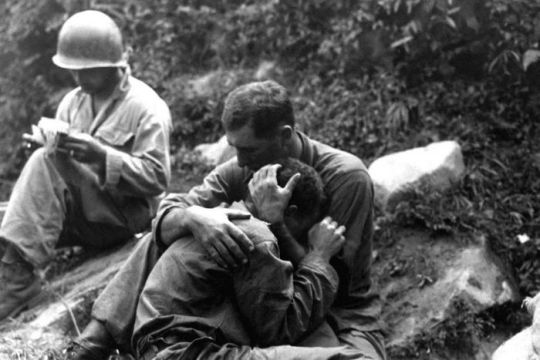
The importance of whether PTSD affected the ancient Greeks and Romans lies in the larger historical question of to what extent we can apply modern experience to unlock or interpret the past. In the period since PTSD was officially recognised, scholars and psychologists have noted its symptoms in descriptions of the veterans of past conflicts. It has become increasingly common in books and novels as well as articles to assume the direct relevance of present-day psychology to the reactions of those who experienced violent events in the historical past. In popular culture, especially television and film dramas, claims for the historical pedigree of PTSD are now often provided as background to the modern story, without attribution. Indeed we just take it as a given that soldier-warriors in the past suffered the same and in the same way as their modern day counterparts. We are used to the West to map the classical world upon the present but whether we can so easily map the modern world back upon the Greeks and Romans is a doubtful proposition when it comes to discussing PTSD.
Simply put, there is no definitive evidence for the existence of PTSD in the ancient world existed, and relies instead upon the assumption that either the Greeks or Romans, because they were exposed to combat so often, must have suffered psychological trauma.

There are two schools of thought regarding the possibility of PTSD featuring in the Greco-Roman world (and indeed the wider ancient world stretching back into pre-history, myth and legend) – universalism and relativism. Put simply, the universalists argue that we all carry the same ‘wetware’ in our heads, since the human brain probably hasn’t developed in evolutionary terms in the eye blink that is the two thousand years or so since the Greco-Roman Classical era. If we’re subject to PTSD now, they posit, then the Greeks and the Romans must have been equally vulnerable. The relativists, on the other hand, argue that the circumstances under which the individual has received their life conditioning – the experiences which programme the highly individual software running that identical ‘wetware’, if you will – is of critical importance to an individual’s capacity to absorb the undoubted horrors of any battlefield, ancient or modern.
Whichever school one falls down on the side of is that what seems to happen in any serious discussion of the issue of PTSD in the ancient world is to either infer it indirectly from culture (primarily, literature and poetry) or infer it from a comparative historical understanding of ancient warfare. Because the direct evidence is so scant we can only ever infer or deduce but can never be certain. So we can read into it whenever we wish.
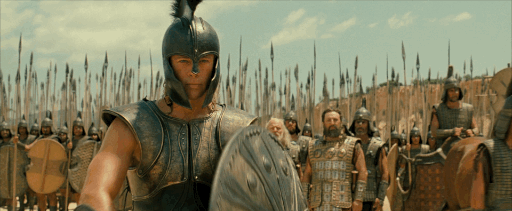
In Greek antiquity we have of course The Illiad and the Odyssey as one of the most cited examples when we look at the character traits of both Achilles and Odysseus. From Greek tragedy those who think PTSD can be inferred often point to Sophocles’s Ajax and Euripide’s Heracles. Or they look to Aeschylus and The Oresteia. I personally think this is an over stretch. Greek writers do; the return from war was a revisited theme in tragedy and is the subject of the Odyssey and the Cyclic Nostoi.
The Greeks didn’t leave us much to ponder further. But, with rare exceptions, the works from Graeco-Roman antiquity do not discuss the mental state of those who had fought. There is silence about the interior world of the fighting man at war’s end. So we are led to ponder the question why the silence?
This silence also echoes into the Roman period of literature and history too. Indeed when we turn to the Roman world, descriptions of veterans are rare in the writings that survive from the Roman world and occur most often in fiction.
In the first poem of Ovid’s Heroides, the poet writes about a returned soldier tracing a map upon a table (Ov. Her. 1.31–5):
...upon the tabletop that has been set someone shows the fierce battles, and paints all Troy with a slender line of pure wine:
‘Here the Simois flowed; this is the Sigeian territory,
here stood the lofty palace of old Priam, there the tent of Achilles...’

This scene provides an intimate glimpse of what it must have been like when a veteran returned home and told stories of his campaigns: the memories of battle brought to the meal, the crimson trail of the wine offering a rough outline of the places and battlefields he had experienced. The military characters in poems and plays show a world in which soldiers are ubiquitous, if somewhat annoying to the civilians. Plautus, for instance, in his Miles Gloriosus, portrays an officer boasting about his made-up conquests – the model for the braggart in A Funny Thing Happened on the Way to the Forum – and Juvenal complains about a centurion who stomps on his sandalled foot in the bustling Roman street.
Despite this silence, compelling works have been written that interweave vivid modern accounts of combat and its aftermath with quotes from ancient prose and poetry. At their best, these comparisons can illuminate both worlds, but at other times the concerns of the present-day author are imposed on the ancient material. But the question remains are such approaches truthful and valid in understanding PTSD in the ancient world?

So if arts and literature don’t really tell us much what about comparative examples drawn from military history itself?
Here again we are in left disappointed.
According to the Greek historian, Herodotus, in 480 B.C., at the Battle of Thermopylae, where King Leonidas and 300 Spartans took on Xerxes I and 100,000-150,000 Persian troops, two of the Spartan soldiers, Aristodemos and another named Eurytos, reported that they were suffering from an “acute inflammation of the eyes,”...Labeled tresantes, meaning “trembler,”. It is that Aristodemos later hung himself in shame. Another Spartan commander was forced to dismiss several of his troops in the Battle of Thermopylae Pass in 480 B.C, “They had no heart for the fight and were unwilling to take their share of the danger.”
Herodotus again in writing about the battle of Marathon in 490 B.C., cites an Athenian warrior who went permanently blind when the soldier standing next to him was killed, although the blinded soldier “was wounded in no part of his body.” Interestingly enough, blindness, deafness, and paralysis, among other conditions, are common forms of “conversion reactions” experienced and well-documented among soldiers today
Outside the fictional world, Roman military history tell us very little.
Appian of Alexandria (c. 95? – c. AD 165) described a legion veteran called Cestius Macedonicus who, when his town was under threat of capture by (the Emperor-to-be) Octavian, set fire to his house and burned himself within it. Plutarch’s Life of Marius speaks of Caius Marius’ behaviour who, when he found himself under severe stress towards the end of his life, suffering from night terrors, harassing dreams, excessive drinking and flashbacks to previous battles. These examples are just a few instances which seem to demonstrate that PTSD, or culturally similar phenomena, may be as old as warfare itself. But it’s worth stressing it is not definitive, just conjecture.
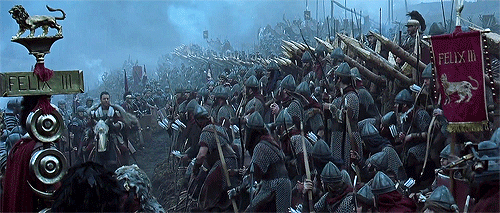
Of course of accounts of wars and battles were copiously written but not the hard bloody experience of the soldier. Indeed the Roman military man is described almost exclusively as a commander or in battle. Men such as Caesar who experienced war and wrote about it do not to tell us about homecoming.
It seems one of main challenges when we try to see military history through the lens of our definition of PTSD is to first understand the comparative nature of military history and what it is we are comparing ie mistaking apples for oranges.
The origin of military history was tied to the idea that if one understood ancient battle, one might fight and, more importantly, one might lead and strategise more effectively. In essence, much of the training of officers – even in the military handbooks of the Greeks and Romans – was an attempt to keep new commanders from making the same mistakes as the commanders of old. Military history is intended to be a pragmatic enterprise; in pursuit of this pragmatic goal, it has long been the norm to use comparative materials to understand the nature of ancient battle.
The 19th Century French military theorist Ardant du Picq argued for the continuity of human behaviour and assumed that the reactions of men under the threat of lethal force would be identical over the centuries: “Man does not enter battle to fight, but for victory. He does everything that he can to avoid the first and obtain the second....Now, man has a horror of death. In the bravest, a great sense of duty, which they alone are capable of understanding and living up to, is paramount. But the mass always cowers at sight of the phantom, death. Discipline is for the purpose of dominating that horror by a still greater horror, that of punishment or disgrace. But there always comes an instant when natural horror gets an upper hand over discipline, and the fighter flees”
These words offer insight to those of us who have never faced the terror of battle but at the same time assume the universality of how combat is experienced, despite changes in psychological expectations and weaponry, to name but two variables.
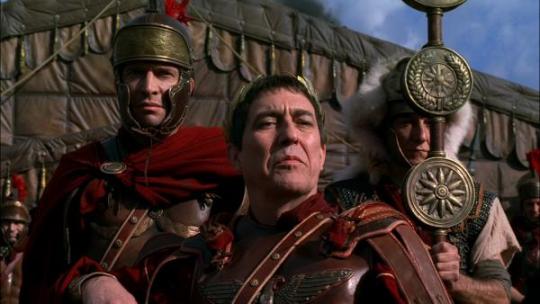
Another incentive for scholars and researchers is to turn to comparative material has been the growing awareness of the artificiality of how we describe war. A mere phrase such as ‘flank attack’ does not capture the bloody, grinding human struggle. Roman authors – especially those who had not fought – often wrote generic descriptions of battle. Literary battle can distort and simplify even as it tells, but if the main things are right – who won, who lost, and who the good guys are – the important ‘facts’ are covered. Even if one intends to speak the truth about battle, the assumptions and the normative language used to describe violence will affect the telling. We may note that the battle accounts in poetry become increasingly grisly during the course of the Roman Empire (perhaps owing to the growing popularity of gladiatorial games),while, in Caesar’s Gallic War, the Latin word cruor (blood) never appears and sanguis (another Latin word for blood) only appears in quoted appeals (Caes. B. Gall. 7.20, in the mouth of Vercingetorix, and 7.50, where the centurion M. Petronius urges his men to retreat). The realities of the battlefield are described in anodyne shorthand. In much the same way that the news rarely prints or televises graphic images, Caesar does not use gore, and perhaps for the same reason – to give a sense of reportorial objectivity.
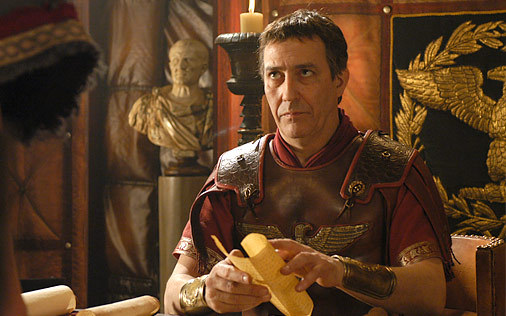
Another element in the interpretive scrum is a given author’s goal in writing an account in the first place: Caesar, for example, was writing about himself, and he may have been producing something akin to a political campaign ad. Caesar makes Caesar look great and there is reason to believe that, if he was not precisely cooking the books, he did give them a little rinse to make him look more pristine. Given the many factors that complicate our ability to ‘unpack’ battle narratives, Philip Sabin has argued that the ambiguity and unreliability of the ancient sources must be supplemented by looking at the “form of the overall characteristics of Roman infantry in mortal combat”. Again the modern is used to illuminate that which is obscured by written accounts and the “the enduring psychological strains” are merely unconsciously assumed.
These legitimate uses of comparative materials have led to a sort of creep: because military historians have used observations of how men react to combat stress during battle to indicate continuity of behaviour through time, there appears to be a consequent expectation that men will also react identically after battle. This creep became a lusty stride with modern books written about the ancient world and PTSD.
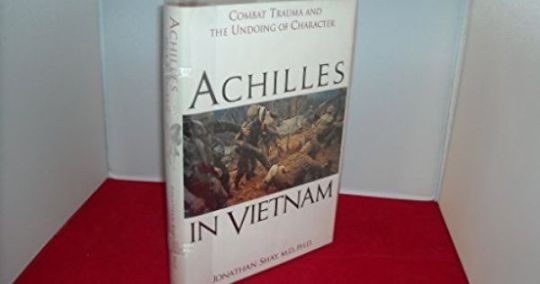
After I finished my tour in Afghanistan I read many books recommended to me by family and friends as well as comrades. One of these books is well known in military circles - at least amongst the thinking officer class - as an iconic work of marrying the ancient world and the modern experience of war. I read it and I was touched deeply by this brilliant therapeutic book. It was only months later I began to re-think whether it was a true account of PTSD in the ancient world.
This insightful book is called Achilles in Vietnam by Jonathan Shay. Shay is psychiatrist in Boston, USA. He began reading The Iliad with Vietnam veterans whom he was treating. Achilles in Vietnam, is a deeply humane work and is very much concerned with promoting policies that he hoped would help diminish the frequency of post-traumatic stress. His goal was not to explain ancient poetry but to use it therapeutically by linking his patients’ pain to that of the Iliad’s great hero. His book offers a conduit between the reader and the experiences of the men that Shay counsels. In the introduction to this work he makes a nod to Homerists while also asserting the primacy of his own reading:
“I shall present the Iliad as the tragedy of Achilles. I will not glorify Vietnam combat veterans by linking them to a prestigious ‘classic’ nor attempt to justify study of the Iliad by making it sexy, exciting, modern or ‘relevant’. I respect the work of classical scholars and could not have done my work without them. Homer’s poem does not mean whatever I want it to mean. However, having honored the boundaries of meaning that scholars have pointed out, I can confidently tell you that my reading of the Iliad as an account of men in war is not a ‘meditation’ that is only tenuously rooted in the text. “
After outlining the major plot points around which he will organise his argument, he notes, “ ‘This is the story of Achilles in the Iliad, not some metaphorical translation of it”.
The trouble was and continues to be is that many in the historical and medical fields began to rush to unfounded conclusions that Shay, on the issue of PTSD in the ancient world, had demonstrated that the psychological realities of western warfare were universal and enduring. More books on similar comparative themes soon emerged and began to enshrine the truth that PTSD was indeed prevalent throughout the ancient world and one could draw comparative lessons from it.

Perhaps one of the most influential books after Shay was by Lawrence Tritle. Tritle, a veteran himself, wrote From Melos to My Lai. It’s a fascinating book to read and there are parts that certainly resonate with my own experiences and those of others I have known. In the book Tritle drew a direct parallel between the experiences of the ancient Greeks and those of modern veterans. For instance, Xenophon, in his military autobiography, presents a brief eulogy for one of his fallen commanders, Clearchus. Xenophon writes that Clearchus was ‘polemikos kai philopolemos eschatos’ (Xen. An. 2.6) – ‘warlike and a lover of war to the highest degree’.
Tritle comments:
“The question that arises is why men like Clearchus and his counterparts in Vietnam and the Western Front became so entranced with violence. The answer is to be found in the natural ‘high’ that violence induces in those exposed to it, and in the PTSD that follows this exposure. Such a modern interpretation in Clearchus’ case might seem forced, but there seems little reason to doubt that Xenophon in fact provides us with the first known historical case of PTSD in the western literary tradition.”
Arguably in the West and especially our current modern Western culture is predicated at baulking at the notion of being ‘war lovers” as immoral. But such an interpretation speaks more of our modern Christianised ambivalence towards war; to the Spartans and Athenians the term would not have had a negative connotation. ‘Philopolemos’ is, in fact, a compliment, and the list of Clearchus’ military exploits functions as a eulogy. There are points where his analysis does not adequately address the divergences between ancient and modern experiences.
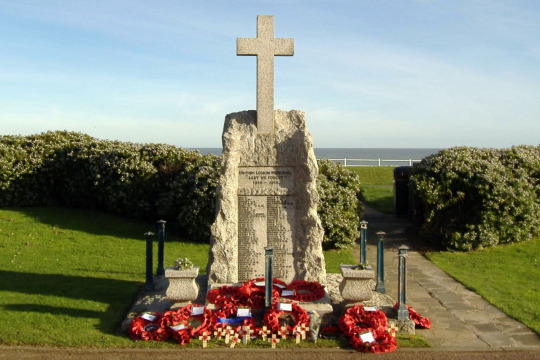
For all the talk of our Western culture being rooted in Ancient Greece and Rome we are not shaped by the same ethics. Our modern ethics and our moral code is Christian. There is no such thing as a secular humanist or atheist both owe a debt to Christianity for the way they have come to be; in many respects it’s more accurate to describe such people as Christianised Humanists or Christian Atheists even if they reject the theological tenets of the religious faith because they use Christian morality as the foundation to construct their own. Many forget just how brutal these ancient societies were in every day life to the point there would be little one could find recognisable within our own modern lives.
Now we come to third point I wish to make in determining where the Greeks or Romans actually experienced PTSD. This is to do with the little understood nature of PTSD itself. As much as we know about PTSD there is still much more we don’t know. Indeed one of the most problematic and complicated issues is the continued disagreement around the diagnosis and specific triggers of the disorder which remain little understood. We have to admit there are competing theories about what causes PTSD but, in terms of experiences that make it manifest, there are essentially three possible triggers: witnessing horrific events and/or being in mortal danger and/or the act of killing – especially close kills where the reality of one’s responsibility cannot be doubted. The last of these was strongly argued in another scholarly book by D. Grossman, On Killing, the Psychological Cost of Learning to Kill in War and Society (1995).
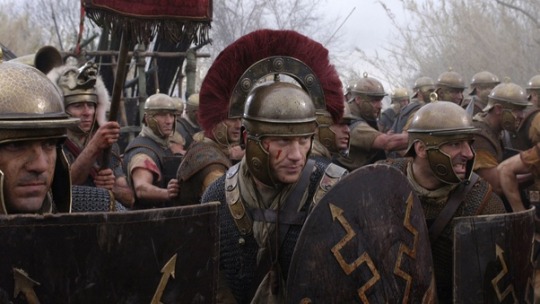
Roman soldiers had the potential to experience all of these things. The majority of Roman combat was close combat and permitted no doubt as to the killer. The comparatively short length of the gladius encouraged aggressive fighting. Caesar recounts how his men, facing a shield wall carried by the taller Gauls, leaped up on top of the shields, grabbed the upper edges with one hand, and stabbed downwards into the faces of their opponents (Caes. B. Gall. 1.52). As for mortal danger, Stefan Chrissanthos in his informative book, Warfare in the Ancient World: From the Rise of Uruk to the Fall of Rome, 3500BC-476AD, puts it this way: “For Roman soldiers, though the weapons were more primitive, the terrors and risks of combat were just as real. They had to face javelins, stones, spears, arrows, swords, cavalry charges, and maybe worst of all, the threat of being trampled by war elephants.”
Such terrors are regularly attested. During his campaign in North Africa, Caesar, noting his men’s fear, procured a number of elephants to familiarise his troops with how best to kill the beasts (Caes. B. Afr.72). It should also be noted that it was not unusual for the reserve line to be made up of veterans because they were better able to watch the combat without losing their nerve. Held in reserve, they had to watch stoically as their comrades were injured and killed, and contemplate the awful fact that they might suffer the same fate. This was not a role for the faint of heart.
However, while the Romans certainly had the raw ingredients for combat trauma, the danger for a Roman legionary was much more localised. Mortars could not be lobbed into the Green Zone, suicide bombers did not walk into the market, and garbage piled on the street did not hide powerful explosives. The danger for a Roman soldier was largely circumscribed by his moments on the field of battle, and even here, if he was with the victorious side, the casualties were likely to be light: at Gergovia, a disaster by Caesar’s standards, he lost nearly seven hundred men (Caes. B. Gall. 7.51). In his victory over Pompey the Great at Pharsalus, his casualties numbered only two hundred (Caes. B. Civ. 3.99).
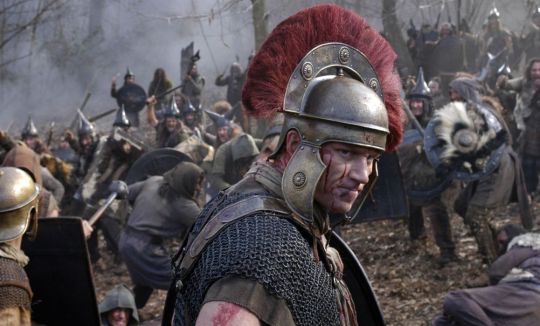
So we are left with the disturbing question: were the stressors really the same?
This is the part where I also defer to my eldest sister as a doctor and surgeon specialising in neurology and just so much smarter than myself.
My eldest sister holds the view in talking to her own American medical peers that despite similar experiences in Afghanistan and Iraq, British soldiers on average report better mental health than US soldiers.
My sister pointed out to research study done by Kings College London way back around 2015 or so that analysed 34 studies produced over a 15-year period (up to 2015) and found that overall there has been no increase in mental health issues among British personnel - with the exception of high rates of alcohol abuse among soldiers. The study was in part inspired the “significant mental health morbidity” among U.S. soldiers and reports that factors such as age and the quality of mental health programs contribute to the difference between the two nation’s servicemen and women.
She pointed out that these same studies showed that post-traumatic stress disorder afflicts roughly 2 to 5% of non-combat U.K. soldiers returning from deployment, while 7% of combat troops report PTSD. According to a General Health Questionnaire, an estimated 16 to 20% of U.K. soldiers have reported symptoms of common mental disorders, similar to the rates of the general U.K. population. In comparison, studies around the same time in 2014 showed U.S. soldiers experience PTSD at rates of 21 to 29%. The U.S. Department of Veteran Affairs estimated PTSD afflicted 11% of veterans returning from Afghanistan and 20% returning from Iraq. Major depression was reported by 14% of major soldiers according to another study commissioned by RAND corporation; roughly 7% of the general U.S. population reports similar symptoms.
It’s always tough comparing rates between countries and is not a reflection of the quality of the fighting soldier. But one finding that consistently and stubbornly refuses to go away is that over the past 20 years reported mental health problems tend to be higher among service personnel and veterans of the USA compared with the UK, Canada, Germany and Denmark.

However my sister strongly cautioned against making hasty judgements. And there could be many variable factors at play. One explanation is that American soldiers are more likely than their British counterparts to be from the reserve forces. Empirical studies showed reservists from both America and British troops were more likely to experience mental illness post-deployment. It was also worth pointing out that American soldiers also tended to be younger - being younger and inexperienced as well as untested on the battlefield, service personnel would naturally run the risk of greater and be more vulnerable to mental illness.
In contrast, the elite forces of the British army, such as your brother’s Parachute Regiment or the Royal Marines, were found to be the least affected by mental illness. It was found that in spite of elite forces experiencing some of the toughest fighting conditions, they tended to enjoy better mental health than non-elite troops. The more elite a unit is or more professional then you find that troops tend to enjoy a very deep bonds of camaraderie. As such the social cohesion of these fighting forces provides a psychological protective buffer. Not for all, but for many.

More intriguing are new avenues of discovery that might go a long way to actually understanding one of the root causes of PTSD. According to my sister, recent research carried out in the US and Europe and published in such prestigious medical journals as the New England Journal of Medicine (US) and the Lancet (UK), seems to establish a causal link between concussive injury and PTSD.
One recent study looked at US soldiers that concerned itself with the effects of concussive injuries upon troops after their return from active duty during the war in Iraq.
Of the majority of soldiers who suffered no combat injuries of any sort, 9.1 per cent exhibited symptoms consistent with PTSD. This allows a baseline for susceptibility of roughly 10% of the population. A slightly higher number (16.2%) of those who were injured in some way, but suffered no concussion, also experienced symptoms. As soon as concussive injuries were involved, however, the rates of PTSD climbed dramatically.
Although only 4.9% of the troops suffered concussions that resulted in complete loss of consciousness, 43.9% of these soldiers noted on their questionnaires that they were experiencing a range of PTSD symptoms. Of the 10.3% of the unit who suffered concussion resulting in confusion but retained consciousness, more than a quarter (27.3%) suffered symptoms. This suggests a high correlation between head trauma and the occurrence of subsequent psychological problems. The authors of the study note that ‘concern has been emerging about the possible long term effect of mild traumatic brain injury or concussion...as a result of deployment related head injuries, particularly those resulting from proximity to blast explosions’
Although these results are preliminary, if confirmed they have profound implications for anyone trying to understand the nature of warfare in the ancient world, especially the Western world.
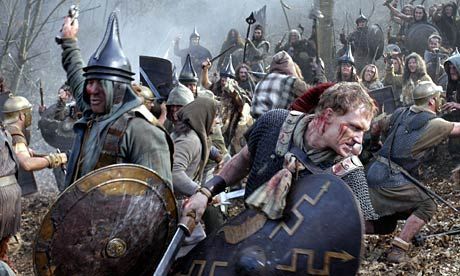
So why does it matter?
In Roman warfare, wounds were most often inflicted by edged weapons. Romans did of course experience head trauma, but the incidence of concussive injuries would have been limited both by the types of weapons they faced and by the use of helmets. Indeed the efficacy and importance of headgear for example can be deduced from the death of the Epirrote general Pyrrhus from a roof tile during the sack of Argos. It is likely that the Romans designed their helmets with an eye to blunting the force of the blows they most often encountered. Connolly has argued that helmet design in the Republican period suggests a crouching fighting stance (see P. Connolly, ‘The Roman Fighting Technique Deduced from Armour and Weaponry’, Roman Frontier Studies (1989). However my own view is that the change in helmet design may signal instead a shift in the role of troops from performing assaults on towns and fortifications when the empire was expanding (and the blows would more often rain from above) to the defence and guarding of the frontiers.
While the evidence is clear that concussion is not the only risk factor for PTSD, it is so strongly correlated that it suggests that the incidence of PTSD may have risen sharply with the arrival of modern warfare and the technology of gunpowder, shells, and plastic explosives. Indeed, accounts of shell shock from the First World War are common, and it was in the wake of that war that those observing veterans suspected that neurological damage was being caused by exploding shells.
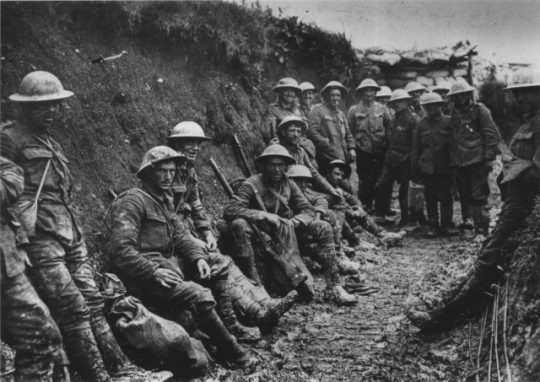
For soldiers of the Second World War and down to our modern day, an artillery barrage is like an invention of hell.
As one American put it in his memoirs of fighting the Japanese at Peleiu and Okinawa, “I developed a passionate hatred for shells. To be killed by a bullet seemed so clean and surgical but shells would not only tear and rip the body, they tortured one’s mind almost beyond the brink of sanity. After each shell I was wrung out, limp and exhausted. During prolonged shelling, I often had to restrain myself and fight back a wild inexorable urge to scream, to sob, and to cry. As Peleliu dragged on, I feared that if I ever lost control of myself under shell fire my mind would be shattered. To be under heavy shell fire was to me by far the most terrifying of combat experiences. Each time it left me feeling more forlorn and helpless, more fatalistic, and with less confidence that I could escape the dreadful law of averages that inexorably reduced our numbers. Fear is many-faceted and has many subtle nuances, but the terror and desperation endured under heavy shelling are by far the most unbearable” (see E.B. Sledge, With the Old Breed at Peleiu and Okinanwa, 2007).

The psychological effect of shelling seems to result from the combined effect of awaiting injury while at the same time having no power to combat it.
There is another aspect that I alluded to above which is the psychological and societal conditioning of the Roman soldier. In other words a Roman male’s social and cultural expectations of his place in the world. Feelings of helplessness and fatalism were probably a less alien experience for most Romans – even those in the upper classes. In general, the Romans inhabited a world that was significantly more brutal and uncertain than our own.
This another way of saying that the Roman and 21st century combat are very different in a variety of ways that subject the modern soldier to a good deal more stress than the legionary was ever likely to suffer. And the Roman’s societal preparation – his life before the battle – was far more robust than that we enjoy today.
Take infant mortality. In the modern developed world, our infant mortality rates are about ten per thousand. In Rome, it is estimated that this number was three hundred per thousand. Three-tenths of infants would die within the first year, and an additional fifth would not make it to the age of ten - 50% of children would not survive childhood. Anecdotal evidence supports these statistics: Cornelia, the mother of the Gracchi, gave birth to twelve children between 163 bc and 152 bc; all twelve survived their father’s death in 152 bc, but only three survived to adulthood. Marcus Aurelius and his wife, Faustina, had at least twelve children but only the future emperor Commodus survived.
Then look at how that child grows up. The typical Roman child would be raised in a society that readily accepted ultra-violent arena entertainment, mob justice, frequent and bloody warfare as a fact of life. This was reinforced by religious and societal encouragement to see war as natural and beneficial, open butchering of food animals, a total lack of support structures for the poor and less able.

Compared to the legionary our modern soldier has been protected from such realities to a greater degree than at any other point in history, and will thus be far less well prepared for the horror of a warfare that contains far more stress factors than for a man who might fight a handful of battles in his military career, with long periods of relative calm in between, state of war notwithstanding. Modern special and elite forces training often emphasises the brutalisation and ‘rebuilding’ of the recruit in readiness for this step into darkness, but it seems likely that no such conditioning would have been needed two thousand years ago.
I would argue that we experience war very differently from the way the Romans did. Our modern identity is defined far more by our Western Christian heritage than our Western Classical roots. They are in fact world apart when it comes to ethics and morality. Consider the fact that when we talk of war and killing today we often do so through conflict between our civilian moral codes – which offer the strict injunction not to do violence to other human beings – and wartime, when men are commanded to violate such prohibitions. It is a terrible thing to try to navigate ‘Thou shalt not kill’ and the necessity of taking a life in combat.
It is sometimes the case that the qualities that make the best soldier do not make the best civilian, a point amply attested in Greek poetry by heroes such as Heracles and Odysseus.
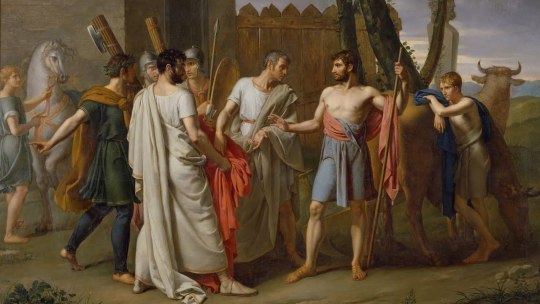
The Romans, for their part, celebrated heroes such as Cincinnatus, who could command effectively and then leave behind the power he wielded to return to his humble plough. It is important, however, when evaluating combat and its effects in the ancient world, that we do not read our ambivalence about violence onto the Romans. They inhabited an empire whose prosperity was quite openly tied to conquest.
As M. Zimmerman writes in his academic article, “Violence in Late Antiquity Reconsidered’ (2007), “The pain of the other, seen on the distorted faces of public and private monuments, or heard in the screams of criminals in the amphitheatre, reassured Romans of their own place in the world. Violence was a pervasive presence in the public space; indeed, it was an important basis for its existence, pertaining as it did not only to victories over external enemies but also to the internal order of the state.”

Violence then was both the means and the expression of Roman power. The Roman soldier was its instrument. The Roman warrior then would have brought a different perspective to lethal violence, and would have had a far more restricted moral circle to his modern counterpart – his friends and family, clan, patron and clients, as opposed to millions of fellow citizens via the internet and social media.
Part II follows next post
#question#ask#PTSD#war#roman#greek#classical#legionary#spartan#mental health#depression#trauma#warfare#british army#mental illness#homecoming#soldiers#combat veterans#veterans
46 notes
·
View notes
Note
Thoughts on a person from history you want the old guard to have interacted with?
OH MY GOSH SO! A QUESTION and also i’ll have to give multiple answers lol
One of the ideas I love most that i think is hinted at is if they interact famous historical people from history it’s two or three generations earlier like it has these ambiguous implications of either a) some kind of divine mission which i LOVE or else b) the whole theme of you get helped up and then you help someone else up we are not meant to be alone circa Celeste the French Shop Clerk... but writ super large anyway this is to say i think most of the time it’s the grandparents of famous people they meet? but i digress. anyway on my list of Famous People from history i want them to have interacted with i’m leaning more towards artist/ and scientist types from what copley’s said, some of the coolest (female) ones maybe include Alice Ball a Black female scientist who at the age of 24 found the first effective treatment for Hansen’s disease/leprosy until antibiotics were invented, Dr. Rita Levi Montalcini, an Italian Jewish neurobiologist who won a Nobel prize for groundbreaking work on nerve factors, and Dr. Flossie Wong-Staal, the Chinese-American scientist whose work on HIV helped ID it as cause of AIDS among other things. Moving on to artists... just a personal fave but on my personal canon of “Nicky likes to play guitar” i totally think there’s a time when Copley’s cleaning out his wife’s record collection and like. realises Nicky’s been on the cover of one of her vinyls of Joan Baez’s recording sessions as a backup guitarist. but she was super cool and probably my favorite 20th century folk singer both for her original work and covers , as well as a Latina woman and dedicated supporter of civil rights and left-wing causes.
that got america centric but moving deeper into history! Andy and Quynh and Lykon are just so... UNIMAGINABLY OLD and it’s wild to think that the birth of writing would have only happened like. a good chunk of the way into their lives. SO- 𒂗𒃶𒌌𒀭𒈾, Enheduanna, the first writer in history whose work we can attach to a name! Cool as hell. (Also it would be fun if they’d gotten cheated by that one sketchy ancient grain dealer tumblr looses their shit over periodically but i don’t know anything about him.)
As for medieval figures i really want Yusuf to have met- Samuel HaNagid! COOL AS HELL AND SOOO interesting! a medieval Jewish polymath from Al-Andalus who was variously a poor spice merchant, statesman, vizier to the caliph, Hebrew and Arabic language poet, Arabic calligrapher, grammarian, Talmudic Scholar and commentator, warrior, and supporter of literature and learning. (Also due to how much of a pleasure seeker the caliph he was vizier for was- arguably ruled as caliph himself, at least in running things and military battle) you can read some of his poetry here, just gonna throw out to all fic writers that he literally wrote the lines “ Make me drunk with the blood of the foe on the day of war And satisfy me with his flesh on the night of redemption.” (haven’t found the og hebrew so can’t testify how accurate this is BUT) (ALso pretty sure some of his love poetry was about men but i can’t find it right now)
ANyway this is just some TOP figures, others i kind of have... squirrelled away to use in fics! hope this was roughly what you were looking for and also i tried hard but am ya know an undergrad with google rather than a trained historian so hopefully this is broadly free of historical mistakes!
#asks#thank you so much!#i have like ideas this isn't even like 1/3 of the people i've thought of#the old guard
77 notes
·
View notes
Note
Follow up questions because I’m a Nerd and I love learning: is there any evidence to suggest frequent inclusion of women in Scandinavian warfare? Or is finding something like women’s armor rare? Was there a standard definition of any queer terminology in any ancient civilization? Did any Norse culture ever find its way to the Middle East???
I feel a bit like an over eager student writing this but uh...I’m very curious. 👀👀
When talking about women in Scandinavia you run into people describing how it appeared these women would take on the role of men in the absence of men. But I think there is an issue in that we’re assuming the role of women in these societies would match the role of an Ancient Greek woman (which is a whole other thing but I digress)
They’ve found that some of the founding fathers of Iceland were women, thirteen of them to be exact. women could inherit land and money from their parents. Women could be involved in legal matters and hold official positions.
There is lots of evidence that women were very frequently going raiding. They have been debating recently I believe if the term dregnr a young warrior really was only applied to men. Young women were described in the same vulgar terms as dominators and something we discuss in ancient Rome was the ideal of male “hardness” basically just being the top dog in the room. Women were the same in Ancient cultures if not expected to hold themselves differently but Skalds (the poets) describe the women just like the men.
Another thing quite recently (1993 so really recent in terms of historical archives) is the idea of the surrogate son. Basically, if a man died with no son to inherit a surrogate son would be chosen over a daughter. It has recently been noted that they very well could have been describing the daughter as a surrogate son. Someone to take up that male role of head of the household. This suggests in the sagas we have noted women but there is also a possibility for women to be described with male traditional words because of the role they were playing.
And we have found tons of armor that looks ceremonially and some battle worn for women yep. All women could fight though it was excepted they could defend themselves and their home front. Against potential attackers and wild animals.
Plus in the 13th century, the Christians introduced the Law of Gulathing which were sets of rules for people to follow. Women were then banned from cutting their hair like men, dressing like men, or in general behaving like men. This suggests It was common enough for them to throw it in the laws that banned traditional things that Scandinavians did that did not fit the Christian narrative or way of life.
-- This is gonna go under the cut for the rest cause wow I got long lol.
Okay queer terminology. You’ll see lesbian which was women who fucks women. and you’ll see penetrator a lot. These were slave cultures also so the idea of sleeping with another citizen was defiling them you shouldn’t do it.
In Ancient Athens, you saw men preferred the company of men over women because they didn’t think women were of value they were only good for producing heirs. There was a thing called pederasty where a wealthy man in his 20s, the erastes, would court a young wealthy man from the ages of 13-19, the eromenos, and teach him and keep him as a lover. Their debate over Achillies and Patroclus for example wasn’t if they were sleeping together but who was fucking who really. Because Patroclus was older but Achillies was the hero so was he being emasculated or were they breaking the age rule? That was their debate cause these things mattered to them
They were kinda the exception to the citizenship rule. The Spartans felt the pederastry was weird because it involved citizens but they were all in with the homo. Obviously, this was all very public and you’d be scorned if they thought you were being penetrated.
All in all, being penetrated was something women and slaves did and the last thing you wanted to be was a woman.
Another thing to consider was these cultures had a lot of problems with excess. So too much sex or food and in Rome you were a uh Cnidus? Idk I can only spell it in Greek which is staggeringly unhelpful but basically, you can’t control your urges. Based off that time someone tried to fuck a statue I think or something like that
The Norse had a similar word ergi which meant you had too much heterosexual sex actually, you were too promiscuous. In the 12th century we know in Iceland homosexual acts like sodomy were banned under Christian canon (Thanks Richard I of England) so there is that. Pre-Christian influence there seemed to be no stigma around this minus don’t force yourself on your friends that’s rude but slaves were fair game. (I wrote a paper on the weird stereotypes of Vikings being the sexual aggressors when the literature of the time suggests the Lotharingians were way way more likely to commit those acts. At least according to French who were besieged constantly by everyone all the time.)
níð was an insult for the ancient norse which basically you had displayed unmanliness. Or you liked to take it up the ass to be plain about it. (Ancient people were vulgar as shit the Romans were obsessed with sexual threats to the point where its just in common day-to-day speech.) Ragr was a term that meant you were unmanly which is much more severe and you could like legally kill someone for saying that up till the 13th century.
There is actually some debate that the concept of unmanly comes from making fun of the Germans. So like if you were Ancient Germanic or Ancient Brittania you were the savages of the day. Which is interesting when you consider the rhetoric those two countries put out. Like literally no one like the Germans or the Brits they thought they were filthy uncivilized and cowardly people.
Also fun from the 7th to 10th century in Norse culture there were these figurines called gold foil couples. In it a couple would be portrayed which was a way of proclaiming themselves married before the gods. It was a very religious practice for them. There are figurines depicting people of the same sex in the gold foil figurines.
Basically, we can thank Christianity for why we think the Vikings didn’t do homosexuality or homosexual acts. Because well they didn’t want them to starting in the 12th century again thanks Richard for having the worst break up with your boyfriend in the history of break ups.
And onto gender which if you know Loki from Marvel him being genderfluid is based entirely on mythology and is common in Norse writings. Okay so essentially we think of seiðr or magic as something women do. And they did too. But men did practice it. This was seen as a third gender in Norse culture, the seiðmaðr a man who practices magic. Hence Loki moving between the three as he’s a known magic-user. There was also this concept of gender mixing, biological men buried in traditionally female clothing. But there is no way for us to know if that is this third gender or potentially they were more excepting of what we would call transgender.
Because most of the writings we have come from the 13th century where Christianity really took over and just started making shit up. Like we have evidence they were trying to cover up things about Norse culture they didn’t like. So men who practiced seiðr were actually ergi and not a different gender, just an unmanly male.
So yeah lol these were acts they did so verbs can be found really easily. But we have mostly Icelandic stuff cause Christians they did fucked up shit
--
And the Vikings in the Middle East. They went all over. We have this assumption they were raiding whenever they went. Actually, the thing is they only raided northern Europe because they rightfully assumed those guys couldn’t fight back.
But they had trading agreements easily with the Greeks, Persians, and Abbassids mostly. There is a woman from Sweden who was buried with a ring that was inscribed with “For/To Allah”
The Arabs had the term Rusiyyah to describe the Vikings because they came so often. They noted that the Rusiyyah were not good at practicing hygiene but also describe their bodies as being “in perfect form” They liked a good ripped viking and I can appreciate that. They were like “they’re filthy but damn are those rusiyyah built”
Baghdad had the first real market place and they had paper from China so they were printing stuff into books which the Vikings found very interesting. There was so much international trade but the British and Germans who we mostly hear from now were so technologically unadvanced there was no way they could have participated with these other older cultures.
There is money found sometimes that was certainly viking in nature. They didn’t really have money like the Arabs at the time preferring to trade in goods. So they offered furs and silks along with weapons and slaves.
And it is possible that there was culture exchange as all cultures were being exchanged back then. We know some vikings converted to Islam as Arab writers commented that they missed pork dearly but were committed to the Path of Islam.
The Slavs or Rus (Russians) of the time were also annoyed with these viking raiders because their shit would get stolen and then sold to Arabia where they’d have to buy it back usually.
So yeah lots of trading going on. And many Vikings like I mentioned worked as bodyguards or mercenaries. We don’t know much of what the Vikings thought except that the writers in Arab noted they were very polite to their hosts if not aggressive with each other in a playful manner.
Lol you really let my nerd pop off here. I’d have to do more research into the Norse effect on the Middle East though cause I only know about the other way around off the top of my head here.
7 notes
·
View notes
Text
Artifact 2:
The Motivation and Purpose Behind Sappho’s Poetry
Within the Ancient Greek Culture, numerous distinguished artists emerged during the Hellenistic period. Most notably, Sappho, the lyric poet, lived and produced some of the most influential art that has ever been recognized. Through Sappho’s poetry writing, purpose and intention can seem quite broad, due to her illustrations though expressionism and interpretation.
Being born in Greece on the island of Lesbos, Sappho grew up in a rather wealthy time in Greece’s power. Fortunately, the arts were important to the Greeks and poetry and literature was a highly sought after occupation. Unfortunately, the religious groups in power believed Sappho’s subject of loving women was inappropriate and often disapproved of these writings. This would lead to the majority of her works being unknown to this day. One major theme in Sappho’s literature is her mention of her gender and sexuality. Many of Sappho’s art depicts the desire to be with women and to love them. As an example, the piece titled, “Sappho 31” illustrates a woman watching as a woman of interest is being talked to by a man. Jealousy is obviously seen from Sappho’s perspective and the narrator expresses the other woman’s beauty. These strong feelings become a motivator for Sappho to write on and she is highly credited to being the origin for homosexual artists known today. Additionally, Sappho is greatly confident in her gender expression and is consistent when using Greek language to signify that she is a woman and that it is being read from a woman’s perspective. Many of her poems include not only her womanly interest, but also the fact that she is a female herself. These details are important to the significance behind gender and sexuality. If Sappho was uncomfortable in her body she may have chosen to write from a male’s perspective. This was not the case. Sappho consistently wrote with feminine language that signified that the author was a woman. Within Sappho’s literature such as “Sappho 38” and “Sappho 47” personal experiences within love interests can be seen. Sappho refers to love in a multitude of perspectives. Many of her poems are of adoration and companionship, but in many others Sappho describes love as painful and difficult. Additionally, Sappho describes herself as a sister in many of her writings and within external sources, but especially within her piece, “Brother’s Poem.” She mentions two of her brothers in this text and writes of her prayers to the gods to watch over them. Their close relationship and her importance she held in her spirituality can be seen as motivators. To ensure they receive this message and correctly so, Sappho writes these collections of homecoming prayers as the theme. No matter the relationship Sappho held, she continuously found inspiration to write on the subject. Her own life became her muse for writing and the relationships she had only supported her with this.
While Ancient Greek culture may be overlooked at times in modern history, Sappho’s poetic literature continues to inspire and influence modern art. The art she produced during her time was one that was motivated by many means. Within her use of expressionism and language, Sappho is able to give a voice to a category of people we otherwise do not see as often in historical arts. Greek poet, Sappho, is a stunning example of how an artist may hold purpose for creating within multiple sectors.
1 note
·
View note
Photo

Terry Jones obituary
One morning Brian Cohen, completely naked, flung open the shutters at his bedroom window to find a mob below hailing him as the Messiah. Mrs Cohen, played by Terry Jones, who has died aged 77, had something to say about that. “He’s not the Messiah. He’s a very naughty boy,” she told the disappointed crowd. It became a classic cinema moment.
The 1979 film Monty Python’s Life of Brian, a satire about an ordinary Jewish boy mistaken for the Messiah, which Jones directed and co-wrote with his fellow Pythons Graham Chapman, John Cleese, Terry Gilliam, Eric Idle and Michael Palin, was banned by 39 British local authorities, and by Ireland and Norway. Jones and his chums were unrepentant: they even launched a Swedish poster campaign with the slogan: “So funny it was banned in Norway.”
As for Jones’s performance as Mandy Cohen, it united two leading facets of the funnyman’s repertoire: his fondness for female impersonation, and his passion for historical revisionism. The latter was evident not just in his work for Monty Python – in which his historian’s sensibility proved essential to the satire of Arthurian England in Monty Python and the Holy Grail (1975), which he co-directed and co-wrote – but also in several documentaries and books in which he stood up for what he took to be the misrepresented Middle Ages.
“We think of medieval England as being a place of unbelievable cruelty and darkness and superstition,” he said. “We think of it as all being about fair maidens in castles, and witch-burning, and a belief that the world was flat. Yet all these things are wrong.”
Arguably, without Jones, Monty Python’s Flying Circus (1969-74) would not have revolutionised British TV comedy. He was key in developing the show’s distinctively trippy, stream-of-consciousness format, where each surreal set-up (the Lumberjack Song, the upper-class twit of the year show, the dead parrot, or the fish-slapping dance) flowed into the next, unpunctuated by punchlines.
For all his directorial flair, though, Jones may well be best remembered for creating such characters as Arthur “Two Sheds” Jackson, Cardinal Biggles of the Spanish Inquisition, the Scottish poet Ewan McTeagle and the monstrous musician rodent beater in the mouse organ sketch who hits specially tuned mice with mallets.
Thanks to the show’s success, Jones was able to diversify into working as a writer, poet, librettist, film director, comedian, actor and historian. “I’ve been very lucky to have been able to act, write and direct and not have to choose just the one thing,” he said.
Jones was a second world war baby, born in Colwyn Bay, north Wales, and brought up by his mother, Dilys (nee Newnes), and grandmother, while his father, Alick Jones, was stationed with the RAF in India. He recalled meeting his father for the first time when he returned from war service: “Through plumes of steam at the end of the platform, he appeared – this lone figure in a forage cap and holding a kit bag. He ran over and kissed my mum, then my brother, then bent down and picked me up and planted one right on me. I’d only ever been kissed by the smooth lips of a lady up until that point, so his bristly moustache was quite disturbing.”
When he was four, the family moved to Surrey so his father could take up an appointment as a bank clerk. Terry attended primary school in Esher and the Royal Grammar school in Guildford. He studied English at St Edmund Hall, Oxford, and developed a lifelong interest in medieval history as a result of reading Chaucer.
At Oxford, he started the Experimental Theatre Company with his friend and contemporary Michael Rudman, performing everything from Brecht to cabaret. He also met Palin and the historian Robert Hewson, and collaborated with them on a satire on the death penalty called Hang Down Your Head and Die. It was set in a circus ring, with Jones playing the condemned man. He and Palin then worked together on the Oxford Revue, a satirical sketch show they performed at the 1964 Edinburgh festival, where he met David Frost as well as Chapman, Idle and Cleese.
After graduation, he was hired as a copywriter for Anglia Television and then taken on as a script editor at the BBC, where he worked as joke writer for BBC2’s Late Night Line-Up (1964-72). Jones and Palin became fixtures on the booming TV satire scene, writing for, among other BBC shows, The Frost Report (1966-67) and The Kathy Kirby Show (1964), as well as the ITV comedy sketch series Do Not Adjust Your Set (1967-69).
In 1967, he and Palin were invited to write and perform for Twice a Fortnight, a BBC sketch show that provided a training ground not only for a third of the Pythons (Jones and Palin), but two-thirds of the Goodies (Graeme Garden and Bill Oddie) and the co-creator of the 1980s political sitcom Yes Minister, Jonathan Lynn.
Jones and Palin wrote and starred in The Complete and Utter History of Britain (1969) for LWT. Its conceit was to relate historical incidents as if TV had existed at the time. In one sketch, Samuel Pepys was a chat show host; in another, a young couple of ancient Britons looking for their first home were shown around the brand-new Stonehenge. “It’s got character, charm – and a slab in the middle,” said the estate agent.
In the same year, he became one of the six founders of Monty Python’s Flying Circus. They expected the show to be quickly decommissioned by BBC bosses. “Every episode we’d be there biting our nails hoping someone might find it funny. Right up until the middle of the second series John Cleese’s mum was still sending him job adverts for supermarket managers cut out from her local newspaper,” Jones recalled. “It was only when they started receiving sackfuls of correspondence from school kids saying they loved it that we knew we were saved.”
After Python finished its run on TV, Jones went on to direct several films with the troupe. The first, Monty Python and the Holy Grail, was, he recalled, “a disaster when we first showed it. The audiences would laugh for the first five minutes and then silence, nothing. So we re-cut it. Then we’d show it in different cities, saying, ‘We’re worried about our film, would you come and look at it?’ And as a result people would come and they’d all be terribly worried about it too, so it was a nightmare.”
He had more fun co-writing and directing two series for the BBC called Ripping Yarns (1976-79) in which Palin starred as a series of heroic characters in mock-adventure stories, among them Across the Andes by Frog, and Roger of the Raj, sending up interwar literature aimed at schoolboys.
Jones directed and starred in Monty Python’s Life of Brian, which some religious groups denounced for supposedly mocking Christianity. Jones defended the film: “It wasn’t about what Christ was saying, but about the people who followed him – the ones who for the next 2,000 years would torture and kill each other because they couldn’t agree on what he was saying about peace and love.”
In 1983 he directed Monty Python’s The Meaning of Life, in which he made, perhaps, his most disgusting appearance, as Mr Creosote, a ludicrously obese diner, who is served dishes while vomiting repeatedly.
During this decade Jones diversified, proving there was life after Python. In 1980, he published Chaucer’s Knight: The Portrait of a Medieval Mercenary, arguing that the supposed paragon of Christian virtue could be demonstrated to be, if one studied the battles Chaucer claimed he was involved in, a typical, perhaps even vicious, mercenary. He also set out to overturn the idea of Richard II presented in the work of Shakespeare “who paints him more like sort of a weak … unmanly character”. Jones portrayed the king as a victim of spin: “There’s a possibility that Richard was actually a popular king,” he said.
He wrote children’s books, starting with The Saga of Erik the Viking (1983), which he composed originally for his son, Bill. A book of rhymes, The Curse of the Vampire’s Socks (1989), featured such characters as the Sewer Kangaroo and Moby Duck.
In 1987, he directed Personal Services, a film about the madam of a suburban brothel catering for older men, starring Julie Walters. The story was inspired by the experiences of the Streatham brothel-keeper Cynthia Payne. Jones proudly related that three of four films banned in Ireland were directed by him – The Life of Brian, The Meaning of Life and Personal Services.
Two years later, he directed Erik the Viking, a film adaptation of his book, with Tim Robbins in the title role of a young Norseman who declines to go into the family line of raping and pillaging. In 1996, he adapted Kenneth Grahame’s Wind in the Willows for the big screen, giving himself the role of Mr Toad, with Ratty and Mole played by Idle and Steve Coogan. But it was rarely screened in cinemas. “It was ruined by studio politicking between Disney and Columbia Tristar,” he said. “We made a really nice film but no one saw it. It didn’t make any money, even though it was well reviewed.”
Jones was also unfortunate with his next film project. Absolutely Anything, based on a script he wrote with the screenwriter Gavin Scott, concerned aliens coming to Earth and giving one person absolute power. Plans were scuppered when a movie with a similar premise, Bruce Almighty, starring Jim Carrey, was released in 2003. Only in 2015 did Jones manage to film Absolutely Anything, in which Simon Pegg, playing a mild-mannered schoolteacher, is given miraculous powers by a council of CGI aliens voiced by Jones and his former Monty Python colleagues. Robin Williams, in one of his last roles, voiced Pegg’s dog.
Jones made well-received history documentaries, including in 2002 The Hidden History of Egypt, The Hidden History of Rome and The Hidden History of Sex & Love, in which he examined the diets, hygiene, careers, sex lives and domestic arrangements of the ancient world, often appearing in the films as an ancient character, sometimes dressed as a woman.
In his book Who Murdered Chaucer? (2003), he wondered if the poet had been killed on behalf of King Henry IV for being politically troublesome.
He wrote for the Guardian, about the poll tax, nuclear power and the ozone layer. He became a vocal opponent of the Iraq war, and his articles on the subject were collected under the title Terry Jones’s War on the War on Terror (2004).
In his 2006 BBC series Barbarians, Jones sought to show that supposedly primitive Celts and savage Goths were nothing of the kind and that the ancient Greeks and Persians were neither as ineffectual nor as effete as the ancient Romans supposed. Best of all, he sought to demonstrate that it was not the Vandals and other north European tribes who destroyed Rome but Rome itself, thanks to the loss of its African tax base.
When Jones was asked what he would like on his tombstone, he did not want to be remembered as a Python, perhaps surprisingly, but for his writing and historical work. “Maybe a description of me as a writer of children’s books or maybe as the man who restored Richard II’s reputation. I think those are my best bits.”
In 2016, it was announced that Jones had been diagnosed with primary progressive aphasia, a form of dementia that impairs the ability to communicate. He and his family and friends spoke about his experiences to help others living with the condition.
Jones is survived by his second wife, Anna (nee Söderström), whom he married in 2012, and their daughter, Siri; and by Bill and Sally, the children of his first marriage, to Alison Telfer, which ended in divorce.
• Terence Graham Parry Jones, writer, actor and director, born 1 February 1942; died 21 January 2020
Daily inspiration. Discover more photos at http://justforbooks.tumblr.com
29 notes
·
View notes
Text
CALL FOR PAPERS: MYTHS

Two mermaids, from Apocalypse, Prophecy of the Tiburtine Sibyl, Harley MS 4972 f. 20r, 1275-1325.
He placed one hand upon my shoulder and, holding me tight, bared my throat with the other, saying as he did so: “First, a little refreshment to reward my exertions. You may as well be quiet; it is not the first time, or the second, that your veins have appeased my thirst!”
Lucy’s eyes were unclean […], instead of pure.
Poor Lucy finds herself tainted by the bite of Count Dracula, an aristocratic Transylvanian vampire that is thirsty for blood, out to export his barbaric ways to Victorian England. In his Dracula (1897), Bram Stoker utilises the myth of the vampire to warn the Victorian reader of the Eastern threat, by portraying Eastern Europe as a place of backwardness and barbaric – vampiristic – rituals. Myths about vampires have been around since the medieval period, when they were commonly linked to profanity. Stoker’s Dracula is the resurrection of a mythological figure, one that can be guided in all sorts of directions, for what was once the myth of the undead has come to represent the fears and threats of the time in which they are resurrected.
Since ancient times, myths have spoken of the how’s and why’s located at the limits of human understanding, designating that place where intellect fails. There, where knowers stop knowing, we story. In The World of Myth (1990) David Leeming writes that ‘human beings have traditionally used stories to describe or explain things they could not otherwise,’ pointing to the timeless human tendency to grapple with the unknown through story. The myth functions as the means by which we relate to the unknown, embodying our wonderings of the worlds beyond human ratio.
These stories are then conveyed through artworks, literature, history, or religion. Myths, however, do not just function as a source of inspiration for the arts, but often find their origin in art, spreading, evolving, and growing with different art forms and styles. The Venus Anadyomene, for example, first emerged from the sea in the Theogony – a poem by Hesiod from the 8th century BC. This specific depiction of Venus, daughter of Jupiter and Dione, as birthed by the sea was then made famous by the painting by Apelles (4th century BC). Although this painting has long been lost, it was described by Pliny in his Naturalis Historia (1st century AD), which served as an iconological guidebook for artists. From the orators who tell and retell their stories throughout generations, to the poets who write them down, to the sculptors who carve them out, stories are kept alive. To this day, Venus is most commonly known as the goddess who rose from the sea.
In the Danish fairytale Den Lille Havfrue (1837) by Hans Christian Andersen, sea foam is not where love is born, but where love goes to die. In the Walt Disney adaptation of the fairytale, The Little Mermaid (1989), mermaid princess Ariel, daughter of king Triton, falls in love with a human prince and gives up her tail to be with him. In the original, quite grim, fairytale by Andersen, the little mermaid finds her prince lying with another. She refuses to stab the lovers to death, as her sisters urge her to, and as a result of her broken heart she dissolves in the foam of the waves.
In Japan, ancient folklore is being retold to a modern audience through the films by Hayao Miyazaki. His Sen to Chihiro no Kamikakushi (Spirited Away, 2001) animates kami, spirits, washing themselves in a bathhouse as a result of pollution and human activity. This mirrors the Shinto belief that both gods and nature have to be respected and kept clean, and serves as a modern warning. Their demonic counterparts, the oni, take form in the character of Yubaba, who is based on the archetype of the mountain witch, or yumuaba. By taking Japanese mythology as a starting point, Miyazaki is able to create a fantasy-scape: a place where the unthinkable becomes possible.
Perhaps our first association with mythology brings us back to Ancient Greece. But for them, μῦθος simply meant a story – whether a true or false one, gossip, a historical tale or one of faeries, even a dream. Mῦθος and λ��γος, two seemingly opposite terms, fantasy and reason, come together in mythology: the analysing and explaining of stories. There are several ways in which a myth can be explained, and therefore one can also speak of several mythologies. In Creative Mythology (1968) for example, American mythologist Joseph Campbell describes how literary figures such as Thomas Mann or James Joyce managed to make themselves into “living myths,” by translating individual experiences through the correct signs. Shakespeare, with his plays, even managed to create myths around historical figures such as King Henry IV, attracting audiences that were eager to learn about history. History has made other figures into myths as well, such as Louis XIV, known as the Sun King, or Marie Antoinnete.
In his Mythologies (1957) Roland Barthes explains the creation and circulation of myths through signs and language. According to Barthes, myths are a societal necessity created on the basis of contemporary social value systems, whereby myth formation should mainly be seen as a semiological process, partly as an ideological one. In the essay “Myth Today,” Barthes examines French bourgeois myths that are deeply rooted in society, yet often go unnoticed or taken as fact. By deconstructing modern myths that are spread through advertisements and propaganda, Barthes is able to get to the core of the societal value system of his time. Most famously, he deconstructs the myths around France’s two national products: steak frites and red wine. Both serve as metaphors for blood which, in French society, equals vitality and virility, which equals masculinity, which equals superiority. Equating France with steak frites and red wine then means equating France with virility, masculinity, superiority.
In “The Double Standard of Aging” (1972), Susan Sontag tackles another modern myth that is deeply-rooted in society, concerning women and age. In the essay, she explains how and why women “of a certain age” are deemed physically undesirable, noting that this differentiates per country. She explains that urbanised societies allow two standards of male beauty, the man and the boy, but only one of female beauty: the girl. This societal judgement of beauty mirrors the evolutionary myth that the value of women is based on their ability for procreation. As a woman’s fertility decreases with age, so does her societal worth.
As the myth moves beyond the human, outside the world as we know it, it writes a strange universe. It points to that which is not completely explainable according to our current structures for categorising the world. The enchanted world of the supernatural, with its gods, witches, and vampires, perhaps writes of a darker, less knowable reality. Their magic, spells, and strange rituals trouble the disenchanted story of Enlightenment, which tells of reason, control, and certainty – a myth in itself. But even though these supernatural entities tell of the incredible and unbelievable, they remain somewhat explainable. Vampires, gods, and witches, for example, are familiar figures based on a set of commonly understood fictions, differing ever so slightly from the human. ‘In many ways, a natural phenomenon such as a black hole is more weird than a vampire,’ writes Mark Fisher in The Weird and The Eerie (2016). We understand where to place and how to interpret the vampire as a fictional entity. A black hole actually exists, yet we do not understand its strange ways of bending space and time. Science Fiction balances on this thin line between fiction and reality. Perhaps the biggest myths, strangest entities, and weirdest monsters are not necessarily found within the fictional realm of the supernatural but right here in ‘the natural.’
‘Coral reefs are monsters.’ In the Arts of Living on a Damaged Planet (2017), Anna Tsing equates this natural phenomenon to the supernatural. Like the mythical chimeras of ancient Greece – beasts made up of the head of a lion, the body of a goat, and the tail of a snake – coral reefs are made of mismatched parts. They embody a strange species encounter as their polyps grow from both animal, plant, and more. Symbiosis, the interaction between two different organisms living in close physical association, might point to some monstrous truth essential to our current epoch of living with the world. In all our vulnerable entanglements with more than human life – we humans too are monsters.
There are literary differences to be found between myths, fairy tales, sagas, lores, fables, and legends. Fairy tales, for example, often take place in a fantastical world, in which magical creatures roam, and battles between Good and Evil take place. Myths, on the other hand, often have a basis in religion and tell stories about gods or divine creators. Both contain supernatural elements, sometimes these have a basis in history, sometimes in religion, and sometimes in fantasy. For this issue of Simulacrum, we have therefore chosen to soften the boundaries between these ways of storytelling, in order to be open to multiple mythologies, their meanings, and interpretations.
Fancy yourself a modern mythologist? Write an article of 1.000, 1.400, or 1.800 words for our upcoming issue, Mythologies. The deadline for first drafts is the 15th of November, 2020. Would you rather write a column, an interview, fiction, poetry, or do you know an artist whose work fits with this theme? Email us at [email protected]. Please send articles as .doc or .docx and portfolio’s as PDF.
------------------------------------------------------------------------
CALL FOR PAPERS: Mythologieën
Hij legde een hand op mijn schouder, hield me stevig vast, ontblootte mijn keel met de andere en zei daarbij: ‘Eerst een beetje verfrissing om mijn inspanningen te belonen. U kunt net zo goed stil zijn; het is niet de eerste keer, of de tweede, dat je aderen mijn dorst hebben gestild!’
Lucy’s ogen waren onrein [...], in plaats van puur
Lucy wordt gebeten door de bloeddorstige Graaf Dracula, een aristocratische vampier uit Transsylvanië, die er op uit is om zijn zondige en barbaarse levensstijl naar Victoriaans Engeland over te brengen. In zijn roman Dracula (1897) zet Bram Stoker de mythische vampier in om de Victoriaanse lezers te waarschuwen voor de opkomende ‘dreiging van het Oosten’ door Oost-Europa af te schilderen als een plek van barbaarse – vampiristische – rituelen. Mythes over vampieren gaan al rond sinds de middeleeuwen en werden toen vooral gelinkt aan godslastering. Met Dracula wekt Stoker dit mythologische figuur op uit de dood en blaast deze nieuw leven in. De vampier, eens de mythe van de ondoden, vertegenwoordigt voortaan de angsten en bedreigingen van de tijd waarin ze herrijst.
Sinds de oudheid gaan mythen over het hoe en het waarom. Daarmee bevinden ze zich aan de grenzen van het menselijk begrip – daar waar het intellect faalt, wordt er verhaald. In The World of Myth (1990) schrijft David Leeming dat ‘mensen van oudsher verhalen hebben gebruikt om dingen te beschrijven of uit te leggen die ze zonder niet zouden kunnen,’ duidend op een tijdloze menselijke neiging om door middel van verhaal door het onbekende te navigeren. Zo functioneert de mythe als het middel waarmee we ons verhouden tot het onbekende, en belichaamt deze onze verwondering over de werelden buiten de menselijke ratio.
Deze verhalen leven vervolgens door via de kunst, literatuur, geschiedenis of religie. Mythen gelden echter niet alleen als inspiratiebron voor de kunsten, maar vinden ook vaak hun oorsprong in de kunst, en verspreiden, evolueren en groeien met verschillende kunstvormen en -stijlen mee. Zo verrees de Venus Anadyomene voor het eerst uit de zee in de Theogonie - een gedicht van Hesiodus uit de 8e eeuw BC. Deze specifieke weergave van Venus, dochter van Jupiter en Dione, als geboren uit de zee werd vervolgens beroemd gemaakt door het schilderij van Apelles (4e eeuw BC). Hoewel het schilderij verloren is geraakt, werd de Venus Anadyomene door Plinius beschreven in de Naturalis Historia (1e eeuw AD), dat diende als iconologische handboek voor volgende generaties kunstenaars. Van de redenaars die generaties lang hun verhalen vertellen, tot de dichters die ze opschrijven en de beeldhouwers die ze uithakken, worden verhalen levend gehouden. Zo staat Venus tot op de dag van vandaag bekend als de godin die uit de zee verrees.
In het Deense sprookje Den Lille Havfrue (1837) van Hans Christian Andersen is zeeschuim niet waar de liefde wordt geboren, maar waar liefde sterft. In de Walt Disney-bewerking van het sprookje, De Kleine Zeemeermin (1989), wordt zeemeermin prinses Ariel, dochter van koning Triton, verliefd op een menselijke prins en geeft ze haar schubben op om bij hem te zijn. In de originele, aanzienlijk grimmigere versie van Andersen treft de kleine zeemeermin haar beminde in bed bij een ander aan. Ze weigert de twee geliefden dood te steken, zoals haar zussen haar toe aanzetten, en als gevolg van haar gebroken hart lost ze op in het schuim van de golven.
In Japan wordt oude folklore voorgedragen aan een modern publiek door de films van Hayao Miyazaki. De geanimeerde Sen to Chihiro no kamikakushi (De reis van Chihiro, 2001) brengt kami, geesten, tot leven. Ten gevolge van menselijke vervuiling moeten de kami zich wassen in badhuizen om zichzelf weer schoon te krijgen. Deze moderne interpretatie weerspiegelt het Shinto-geloof dat zowel goden als de natuur moeten worden gerespecteerd door ze schoon te houden. De demonische tegenhangers, de oni, krijgen vorm in het karakter van Yubaba, die is gebaseerd op het archetype van de bergheks, de yumuaba. Door de Japanse mythologie als uitgangspunt te nemen, is Miyazaki in staat een ‘fantasyscape’ te creëren: een plek waar het ondenkbare mogelijk wordt.
Wellicht brengt een eerste associatie met mythologie ons terug naar de Klassieke Oudheid. Voor de Grieken betekende μῦθος echter simpelweg een verhaal – of dit nu een waar of een onwaar verhaal was; roddels, geschiedenis of een sprookje, zelfs dromen werden gezien als mythe. Mῦθος en λόγος, twee ogenschijnlijk tegengestelde termen, de fantasie en de rede, komen samen in de mythologie: het analyseren en verklaren van verhalen. Er zijn verschillende manieren waarop een mythe verklaard kan worden, en daarom kan er ook sprake zijn van meerdere mythologieën. In Creative Mythology (1968) beschrijft de Amerikaanse mytholoog Joseph Campbell bijvoorbeeld hoe literaire figuren als Thomas Mann of James Joyce erin slaagden om 'levende mythen' van zichzelf te maken door individuele ervaringen met de juiste tekens te vertalen. Shakespeare slaagde er met zijn toneelstukken in mythen te creëren rondom historische figuren zoals koning Hendrik IV, en trok daarmee een publiek aan dat graag over de geschiedenis wilde leren. Zo ook zijn andere figuren zoals Lodewijk XIV, beter bekend als de Zonnekoning, of Marie Antoinette, binnen de historie tot mythen geraakt.
In Mythologies (1975) analyseert Roland Barthes het ontstaan en de circulatie van mythen aan de hand van semiotiek en taal. Volgens Barthes zijn mythen onmisbaar in de maatschappij en baseren zij zich op hedendaagse sociale waardesystemen, waarbij de formatie van de mythe voornamelijk gezien moet worden als een semiologisch process en deels ideologisch. In het essay “Myth Today,” onderzoekt Barthes diepgewortelde Franse mythen die nochtans onopgemerkt blijven of als feit worden beschouwd. Door de deconstructie van moderne mythen, verspreid door reclame en propaganda, komt Barthes tot de kern van zijn eigentijdse sociale waardesysteem. Meest bekend is de deconstructie van de mythe rondom twee nationale Franse producten: biefstuk en rode wijn. Beide dienen als metafoor voor bloed, dat in de Franse maatschappij rijmt met vitaliteit en moed, die rijmen met mannelijkheid, dat rijmt met superioriteit. Het gelijkstellen van Frankrijk aan biefstuk en rode wijn betekent het gelijkstellen van Frankrijk aan moed, mannelijkheid en superioriteit.
In The Double Standard of Aging (1972) pakt Susan Sontag een andere diepgewortelde mythe aan, een omtrent vrouwen en leeftijd. In haar essay zet ze uit een hoe en waarom vrouwen vanaf een bepaalde leeftijd fysiek niet begeerbaar worden geacht, en merkt hierbij op dat dit per land verschilt. Ze legt uit dat verstedelijkte samenlevingen twee normen voor mannelijke schoonheid kennen, die van de man en die van de jongen, en maar een voor vrouwen, die van het meisje. Dit maatschappelijke schoonheidsoordeel weerspiegeld de evolutaire mythe die stelt dat de waarde van een vrouw gelijk staat aan haar voortplantingsvermogen. Net zoals de vruchtbaarheid van een vrouw verminderd naarmate zij verjaard, verminderd ook haar maatschappelijke waarde.
Naarmate de mythe de mens passeert, buiten de wereld zoals wij haar kennen treedt, schept ze een vreemd universum. Ze wijst naar dat wat we nog niet kunnen verklaren met onze huidige structuren voor het categoriseren van de wereld. Het betoverde rijk van het bovennatuurlijke, met haar goden, heksen en vampiers, schetst wellicht een donkerdere realiteit die zich minder goed laat kennen. Hun magie, spreuken en vreemde rituelen zetten zich af tegen het onttoverde narratief van de verlichting, welk van rede, controle en verstand spreekt – een mythe an sich. Maar hoewel deze bovennatuurlijke entiteiten verhalen vertellen over het ongelofelijke, blijven ze enigszins verklaarbaar. Vampiers, goden en heksen bijvoorbeeld, zijn vertrouwde figuren gebaseerd op een verzameling van collectieve fictie, die net afwijken van het menselijke. ‘In many ways, a natural phenomenon such as a black hole is more weird than a vampire,’ schreef Mark Fisher in The Weird and the Eerie (2016). We begrijpen hoe we vampiers als fictionele entiteit moeten plaatsen en interpreteren. Zwarte gaten bestaan echter wél, terwijl wij hun vreemde manieren in het buigen van tijd en ruimte niet bevatten. Science-fiction balanceert op deze dunne lijn tussen fictie en realiteit. Misschien zijn de grootste mythen, raarste entiteiten en meest vervreemdende monsters wel niet te vinden in het fictionele landschap van het bovennatuurlijke maar juist pal hier in het ‘natuurlijke.’
‘Coral reefs are monsters.’ In Arts of Living on a Dying Planet (2017), stelt Anna Tsing dit natuurlijke fenomeen gelijk aan het bovennatuurlijke. Zoals de mythische chimeras uit de Griekse oudheid – beesten met het hoofd van een leeuw, het lichaam van een geit en de staart van een slang – bestaan koraalriffen uit mismatched onderdelen. Met hun poliepen die zowel dierlijk als plantaardig kunnen zijn, belichamen ze een vreemde ontmoeting tussen de soorten. Symbiose, de interactie tussen twee verschillende organismen die in nauw contact met elkaar leven, wijzen ons wellicht naar een bepaalde, monsterlijke waarheid die essentieel is aan ons huidige tijdperk van leven met de aarde. In al onze kwetsbare verstrengelingen met meer dan menselijk leven, zijn ook wij mensen monsters.
Er zijn literaire verschillen te vinden tussen mythen, sprookjes, sagen, fabels en legenden. Sprookjes, bijvoorbeeld, vinden vaak plaats in een fantasiewereld, waar magische figuren rondzwerven en een strijd tussen goed en kwaad plaatsvindt. Mythes, aan de andere kant, vinden vaak hun oorsprong in religie en vertellen over goden en hemelse scheppers. Beiden bevatten bovennatuurlijke elementen. Soms ligt de basis daarvan in geschiedenis, soms in religie, soms in fantasie. Voor deze uitgave van Simulacrum hebben we er daarom voor gekozen de grenzen tussen deze literaire genres te vervagen, om ons open te stellen voor verschillende mythologieën, hun betekenissen en interpretaties.
Waan je jezelf een moderne mytholoog? Schrijf een artikel van 1.000, 1.400 of 1.800 woorden voor ons komende nummer Mythologieën. De deadline voor de eerste versies is op 15 november 2020. Schrijf je liever een column, interview, fictie of poëzie, of ken je een kunstenaar wiens werk in dit thema ligt? Email naar [email protected]. Voeg artikelen s.v.p. bij als .doc of .docx en portfolio’s als PDF.
1 note
·
View note
Text
Gender Identity In The 24th Century, As Viewed By Trekkies Named Cass Who Are Me
I’ve been real sick lately - in kind of a health crisis, honestly - and I’ve only recently been coming out of it. It made it really difficult for me to write or to find the presence of mind to keep up with a lot of things, Tumblr included.
But I’m back! I’ve been looking in now and then. I probably won’t try to catch up. And I’ve been easing back into writing by finally putting together the first few chapters of my “Trans Harry Kim” fic. (I need to work on other things, which I will get to.) As part of this, today, I wrote some notes on where I plan to take the fic over time, and then I got on this, which...took longer than I thought and now constitutes the majority of the notes.
Presented for your entertainment, my personal views/working canon on how gender identity is handled in the late 24th Century of the Star Trek universe. Working title: “FUCK THE J’NAII UP THE ASS WITH A PISSED-OFF CAT”. Actual title: “Gender Identity In The 24th Century”. With the caveats noted above.
The State of the Art
Even in the 24th Century (Earth standard calendar), no single genetic, environmental, psychological or other factor associated with gender identity has been definitively identified by any culture on par with the scientific and technological development of the United Federation of Planets. Though routine gestational and neo-natal scans sometimes turn up certain genetic indicators, these are generally not acted upon - at least within the Federation - until a child is old enough to express their own gender identity. In most Federation cultures, this will occur by the onset of puberty, if not before. When a child reveals that their gender identity differs from their presumed gender, standard procedure within Federation cultures is to begin a course of psychological evaluations coupled with hormone blockers to delay puberty. However, full transition is generally not delayed - the Federation lacks the paranoia that attended underage trans people of 21st Century Earth, medicine and psychology have advanced exponentially, and physical transitions can be reversed or performed again if required.
Federation medical technology allows for a complete physical transition into the form the patient finds most comfortable. This is accomplished through a cellular reconstruction matrix. The patient is suspended in a tank of biomimetic gel, and through a series of procedures over the course of a week, their body is altered on the genetic level - this is one of the few exceptions to the Federation’s general ban on genetic engineering. Cosmetic changes may be made if desired by the patient, but are generally minimal; in a sense, the patient is recreated as though they had always outwardly presented as their true gender. Those who fall within established gender groupings are genetically and biologically indistinguishable from cisgender individuals. Barring other medical conditions, trans women can bear and nurse biological children; trans men, similarly, can conceive biological children. Fat deposits, hormonal distribution, and all other biological functions are altered accordingly. In the case of individuals who fall outside their culture’s established gender groupings, their bodies will follow the functions they have chosen in collaboration with their physicians.
Cellular reconstruction can be performed on any sufficiently developed Federation planet and most starbases. The majority of Starfleet and civilian vessels are not equipped for the procedure, though some are, most notably those designed with the long-term residence of families including children in mind. Beyond the borders of the Federation, the available medical and psychological procedures vary.
The following is an incomplete summary of attitudes toward transgender individuals on various homeworlds and among the relevant species, including both Federation and non-Federation cultures.
Earth
Contrary to the stereotype, humanity has not become a species of perfect angels, coddled and content in their paradise. Bigotry still exists, but by the 24th Century, that bigotry, where it manifests, is largely turned outward. Vanishingly few human beings object in any way to any element of what the 21st Century would have considered the LGBTQ community; all romantic and sexual interests among consenting adults (including asexuality and aromanticism) and all gender identities are broadly accepted. When homophobia, biphobia, aphobia, or transphobia do manifest, those responsible are shut down hard. Though the LGBTQ community has largely integrated with the broader population and is no longer considered unusual in any way - human sexuality and gender identity are both understood to fall along a relatively even distribution curve - there is still a form of queer culture revived after First Contact. It differs substantially from the pre-warp queer culture that existed prior to the Third World War, but annual Pride festivals remain common, particularly in New York, where the Stonewall Inn still stands as an historic monument.
Transgender individuals are considered widely unremarkable, though self-actualization in any form is considered praiseworthy. Many are open about their history to some degree, but some binary trans people still choose to leave their past behind them, and considering both Federation law and the availability of complete physical transitions, it is easier than ever to do so. Though 24th Century Starfleet considers the use of addresses such as “sir” and “mister” gender neutral, some trans people do quietly object to the practice - as do some cis people, for that matter. Requested exceptions to these addresses are generally accepted with no questions asked; though there is a small movement to correct the perceived problem across Starfleet, tradition continues to stand for the time being.
Vulcan
Those with only a child’s understanding of logic might conclude it is illogical to change the physical body to fit the mind, when surely it is far more efficient to ‘repair’ the mind. Surak and the logicians who have followed in his footsteps would disagree. Transgender Vulcans were known even in the pre-logic era, and recognizing the complexity of the issue, even Surak wrote briefly on the subject in the Kir’Shara. Six hundred years later, in the 10th Century of Earth’s standard calendar, the non-binary Vulcan philosopher S’lira wrote what would later become known as The Logical Underpinnings of Gender Identity, still considered a seminal text by all students of Vulcan literature and philosophy, and beloved by trans people throughout the Federation. Vulcans possessed and employed cellular reconstruction technology prior to First Contact with Earth, though they did not share this technology with other cultures - humanity included - until the establishment of the Coalition of Planets, the precursor to the Federation.
Andor
Andorians, too, recognize gender variance, though their sense of it is somewhat complicated by the fact that their species recognizes four distinct gender groupings as well as a spectrum between and outside these genders. The specific physiology and biology involved can be complex, and as Andorians and Vulcans were mutually hostile for much of their shared history, it took some time for the Andorians to accept cellular reconstruction technology from their former foe, and longer still for them to adapt it.
For a time, during the 24th Century reproductive crisis, there was talk among the higher levels of Andorian government of suspending cellular reconstruction for transgender individuals, as it was felt that the population needed to stabilize and any form of genetic ‘tampering’ was unconscionable under these circumstances. Though this was a minority view, the suggestion, coupled with rumors of wide-scale genetic manipulation to reduce the Andorian species to two recognized gender groupings rather than four (modeling the “male” and “female” of other species), led to ferocious debate in the halls of power. Fortunately, by 2386, the crisis was resolved through the work of Dr. Julian Bashir and his colleagues.
Trill
Unjoined Trill may declare their own gender identities and transition freely. There is no stigma attached to it, and following a physical transition, transgender Trill can still apply to be joined.
There is, however, a taboo around joined Trill transitioning. This is due to two factors: first, the health of the symbiote is considered paramount, and though there are methods of reducing the risk, cellular reconstruction can endanger or at least alter the symbiote as well. Second, in the aftermath of joining, joined Trill must learn to balance their own identities against the memories and identities of their prior hosts. Though candidates for joining are vetted thoroughly, there is still a belief, generally unspoken, that it is possible for one or more prior hosts to so overwhelm the current host that their identity is radically changed. This would be considered a failed joining. In the rare event that a Trill comes out as transgender following joining, the Symbiosis Commission becomes directly involved in the subsequent evaluation, and can deny requests for cellular reconstruction. Though most such situations have been resolved amicably, there have been a few ugly incidents resulting from the Commission’s decisions.
Bajor
Prior to the Cardassian Occupation, the gender spectrum was widely recognized and celebrated among the Bajorans. Though most fell within genders analogous to the human concepts of male and female, and agreed with the gender assigned at their births, binary and non-binary trans Bajorans were not unknown. Trans people were viewed as following the calling of their pagh, and declarations of self, as well as physical transitions, were cause for celebration. Many Bajoran poets and religious figures wrote eloquently on the subject of gender identity, and the ancient Song of the Self Discovered has become a beloved text among Federation cultures since the Occupation ended and Bajorans began to trade and communicate with the Federation on their own terms.
During the Occupation, however, much of this fell by the wayside. The Cardassians frequently refused to allow the Bajorans any form of self-actualization, and it was difficult for those Bajorans in hiding, or in the Resistance, to receive the care they would previously have enjoyed. Following the end of the Occupation, the Bajorans turned to rebuilding their planet, and in that light, some viewed cellular reconstruction or other transition care as a frivolous luxury on a planet still prone to famines, disease, and a general lack of resources.
This began to change as the Bajorans gained distance from the Occupation, and successfully repaired the damage done to their world. By the time of Bajor’s long-delayed admission to the United Federation of Planets, transgender Bajorans were once again widely accepted, even if the culture around them had shifted. The Bajoran people continue to work to recover all that they lost, and strive to build a culture that carries worthy traditions forward while rejecting those elements, such as the d’jarra caste system, that no longer have a place in their society.
J’naii
The J’naii, the native species of the planet which shares their name, are not members of the Federation, though they have had contact and even trade with the Federation in the past. They consider themselves a monogendered species, and do not tolerate any form of gender variance, subjecting those who express any gender identity which does not agree with the prevailing consensus to exruciating psychotectic treatments which most Federation medical professionals decry as brainwashing and torture. This practice has soured relations between the J’naii and the Federation, but the Federation will accept individual J’naii refugees fleeing persecution for their sense of gender identity or general political dissent. There are even some J’naii officers across the gender spectrum serving in Starfleet.
Qo’nos
Even in the 24th Century, Klingon culture is often sexist and rigid. Though women can be warriors and serve aboard Klingon vessels, they do not command. Among noble Klingon Houses, the husband controls the House and its assets, while the wife attends to ritual and social matters. In the event of a noble Klingon man’s death, his widow can preside over his House only in narrow circumstances.
As such, Klingon society has a uniquely one-sided - perhaps completely warped - view on gender identity. It is understandable, in their view, for a woman with the heart of a warrior to hear the call to become a man. This warrior must prove himself in glorious battle before physical and social transition is allowed - but it has happened, and Klingons who would be recognized as trans men among other species have risen to high ranks, even commanding noble houses; historians and observers speculate even some Klingon Chancellors once presented as women. Trans men have been recognized in this fashion since the days of Kahless, who had such a warrior among his companions, and prior to the availability of cellular reconstruction technology on Qo’nos, such warriors could live as men without altering their bodies, taking wives and adopting children.
On the whole, Klingon society does not understand why any virile man would wish to become a woman. There is, even among Klingons, such a thing as compassion, and it is not unknown for individual families to take their transgender daughters offworld for treatment. Correcting their personal records is a more complicated matter, and as a result, there is a small population of “orphan girls” allegedly found among the stars and adopted into families grieving their sons. With the proper persuasion, the authorities generally look the other way.
Klingon society does not generally recognize non-binary individuals within their own species. The concept is baffling. Again, it is not unheard of for non-binary Klingons to seek treatment outside the Empire - but they often exile themselves from Klingon society afterward. Some abandon their culture completely; others attempt to preserve a form of their culture in solitude; but generally speaking, non-binary Klingons do not present themselves as such in public if they continue to live within the borders of the Empire.
Romulus
Gender variance and any accompanying physical transitions are accepted among the Romulans - but there is no escaping the past. Records are meticulously updated and maintained; transgender Romulans are recognized according to their gender identitiy in the present, but their assigned gender at birth, along with all the medical and psychiatric care they have received, are noted in their files. However, though this information may sometimes be brought into play if it seems relevant and the individual has become a target, there is no particular stigma attached to being transgender. Romulan society is largely egalitarian with regard to gender, for all that it is a xenophobic. repressive oligarchy. Men, women, and non-binary Romulans can all be of service to the state, whether in the military, the Tal Shiar, the Senate, or as simple shopkeepers, farmers, or whatever else is required.
Ferenginar
The Ferengi readily understand why a female might wish to become a male, but given their extensive cultural misogyny, they have generally forbidden it. Any Ferengi male discovered to have been assigned female at birth will be harshly punished, their physical transition forcibly undone. As a culture, they have no idea why a male would wish to become a female, and non-binary identities are beyond their comprehension.
None of this means it has not happened. Certainly Ferengi women have posed as men in pursuit of better lives, and some assigned female at birth have genuinely been transgender, going offworld to transition not only for the sake of profit but in answer to the call of their inner selves. Some Ferengi assigned male at birth, though it would be considered scandalous, have abandoned the expectations of their society to become the women they know themselves to be. And Ferengi assigned either way sometimes adopt non-binary identities. It often means leaving Ferengi society, living on the edges at best, but even among a people as profit-driven and rigid as the Ferengi, the true self cannot always be denied.
Things have begun to change with the ascension of the Grand Nagus Rom. Ferengi females can now wear clothes, move outside the home, and pursue profit in their own right. Slowly, the concept of non-binary gender identity has been introduced. Though it is a secret between zirself and zir wife Leeta, Rom is in fact genderfluid, sometimes identifying as male, sometimes as female, and sometimes as non-binary. Leeta accepts this truth wholeheartedly, and Rom’s mother Ishka has come around on the matter as well, but even the new Ferenginar would not accept Rom’s circumstances so readily, and so Rom maintains a strictly male presentation when dealing with literally everyone else.
Cardassia
Cardassian society is perpetually paranoid, and has been for some time. Gender variance is widely viewed as weakness, and weaknesses are to be exploited to remove the unfit from power and allow the advancement of those more equipped to deal with reality. Cardassian society officially only accepts the binary genders of male and female, and has not historically allowed transition between them.
This may not always have been the case - some archaeologists have found evidence of more accepting cultures in the Cardassians’ past, before the rise of the military regime that ultimately gave way to the Dominion. When the civilian Detapa Council briefly overtook the government, there was some movement in the direction of greater tolerance, but this was swiftly quashed once Gul Dukat and his Dominion allies took control.
In the aftermath of the Dominion War, the new civilian government has wrought many changes in Cardassian society. As a people, they have begun to rediscover their history, their ancient culture, even their spiritualism. Tolerance for gender variance, among other differences, has been growing. But progress remains slow. The military and the Obsidian Order, in their time, caused damage that may take decades or centuries to repair. For now, transgender Cardassians generally seek treatment offworld and do their best to keep their heads down and their hopes moderated. But there is hope, no matter how long the road ahead.
Breen
Literally only the Breen could tell you, and they aren’t talking.
The Dominion
The worlds of the Dominion vary widely in their acceptance of and response to gender variance, though most accept it to some degree and offer some form of transition care. The Federation is now in more constant contact with these planets, and with communication and trade have come cultural changes which are bringing even the more conservative societies around.
The Founders have no actual concept of gender or sexuality beyond the Link. They present in whatever forms suit their needs of the moment.
The Vorta and the Jem’Hadar are so heavily genetically engineered, created to singular purposes, that it is difficult to impossible for them to think for themselves. Federation doctors and anthropologists, with the permission of the Founders, are working to undo the genetic damage and to introduce concepts long since lost among these species, but for the moment, all Jem’Hadar continue to present as male and refuse to admit any feelings to the contrary.
The Vorta consider it blasphemy to alter the bodies given them by the Founders, but male, female, and non-binary Vorta all exist, so that they can interface with any culture regardless of the local views on gender. Among the Vorta themselves, the distinction is meaningless. They are sterile, cannot reproduce without medical intervention, and have been cloned exclusively for longer than any living Vorta can now recall. Their culture is stagnant, their imaginations nearly nonexistent, and they are only slowly beginning to recognize any sense of personal identity.
The Borg Collective
Surprisingly, the Borg recognize gender variance and routinely perform physical transition. The reason has to do with efficiency: gender dysphoria is a condition which inherently complicates the interlink between the drone and the Collective. In allowing a drone’s body to conform to their sense of self, this sense of self can then be subdued. The conscious mind, at peace, can be suppressed and captured within a waking dream, giving the drone over to the Collective. Transphobia and gender stereotypes are irrelevant. All will become one with the Collective and adapt to service them. Dysphoria will be subdued; resistance is futile.
Aboard a Borg ship, genetic reconfiguration can be achieved within any standard regeneration alcove or maturation chamber. Sterilization fields and other necessities can be easily supplied by the ship’s systems. The technology would need to be adapted outside this environment, but as the vast majority of drones live aboard ships, stations, and unimatrices, and treatment is applied as soon as the problem is identified, this concern is generally irrelevant.
#star trek#fanfic#star trek fanfic#trans stuff#cass is back on her bullshit#cass is generally back#change of course#star trek voyager
8 notes
·
View notes
Note
ah thank you! i’m just struggling with finding ways to honour Mnemosyne, as almost all information was lost on her aside from her being the mother of The Muses. do you have any advice on how i could find ways to strengthen my connection with Her if i don’t even know what sort of offerings to give? thank you so much
Hey, I did some fun and sexy research for you using JSTOR and SciHub. @illusionofmyself
So: Things you may not know about Mnemosyne!
If you are familiar with Asklepios and curative incubation, Mnemosyne was honored at the Asklepieia. One author believes her presence was requested to aid in recalling the encounter with Asklepios after the patient woke up, “represented the capacity for ordered thought (akin to her function in epic poetry) which allowed for the transformation of the ritual experience at the Asklepiea into sacred literature” and to help memorialize the divine intervention of Asklepios, which would “[bolster] the fame of Asklepios and the status of his sanctuaries”. [[A quick summary of incubation: Asklepios is a healing god, the son of Apollo. Patients in Ancient Greece would go to the Asklepieia, which was a healing temple. Incubation is the process of receiving divine advice through dreams--patients would sleep at the temple, Asklepios would visit them in their dreams and tell them how they were to be cured. When the patient awoke, they would tell the priests, who would perform the cure.]] So Mnemosyne helped the patient recall the dream, and therefore give the full advice to the priests from Asklepios.
The sacred texts from the Pergamon Asklepion has a bit more detail... The preliminary rituals at Pergamon included offerings of meat and cake to various gods and an offering of a suckling pig to Asklepios at the main altar, along with the monetary offering, but this was not the last offering for most supplicants. At nightfall, three more nine-knobbed round cakes were to be offered, one each on the outside altar to Tyche and Mnemosyne, and one to Themis within the incubation chamber. ... [I]n Piraeus, Mnemosyne’s offering probably preceded the offering to Asklepios before incubation. In Pergamon, the offering to Asklepios happened after the meat and cake offerings to the other gods and before the offerings to Tyche and Mnemosyne just outside the sleeping chambers and to Themis just inside the sleeping chambers. So, the offering to Mnemosyne happened right before incubation. Threnheim’s point about the importance of remembering the dream certainly accounts for the timing of the offering to Mnemosyne. Presumably one would want to invoke Mnemosyne as closely as possible to the actual incubation... Mnemosyne is one of the two gods (along with Apollo) that can be found at the Epidaurian, Pergamene, and Piraean sanctuaries. [[This is significant because there were up to 11 different gods honored at each of the 3 sites, but only Asklepios, Apollon, and Mnemosyne were mentioned at each one. She was clearly VERY important.]]
...
So what was the significance of Mnemosyne? At the most basic level, her gift of memory was necessary for the cult of Asklepios to work properly, since everything hinged on the incubant remembering the dream and attributing the cure to the god. But the process of remembering a dream vision is no simple matter, let alone interpreting it in a sensible way. Mnemosyne’s presence was a way that ancient people thought they could ensure accurate recollection of a dream vision of Asklepios.
...
Mnemosyne also could have helped make logical sense of the nonsensical images remembered in dreams—sort of a second order of intellectual activity beyond that of remembering. Diodorus goes on to say, “Of the female Titans, they [the Cretans] say that Mnemosyne discovered the power of reason [λογισμούς],” a power that allows humans to account for phenomena and think through their various dimensions in a logical and orderly manner (5.67). Diodorus explains that Mnemosyne also “prescribed the determinations of names for each of the things that exist through which we also explain each and every thing and converse with one another” (5.67.3).24 So, it is not simply the internal intellectual powers of reason that were attributed to Mnemosyne, but also the power of human knowledge of the world through which humans could then interact intellectually and culturally. For without knowing the names of “everything that exists,” humans would not be able to communicate with each other in any meaningful way. Mnemosyne is credited with reason, human knowledge, and one of the basic tenets of human culture: meaningful verbal interaction.
...
As mother of the Muses, Mnemosyne drives what comes at the hand of the Muses. The following inscription captures well the relationship between the Muses and Mnemosyne in ancient Greek culture. It comes from a statue group of the Muses; the Muse Polymnia is speaking: “It is fitting that I, Polymnia, daughter of Mnemosyne, am the researcher of everything; for all history comes from memory.” 31 So, when the epic poets invoke the Muses, Mnemosyne must also be considered as the grounding for what results.
[[The author also notes that communicating the glory of the gods was a role of the Muses, and therefore is attributed to Mnemosyne.]]
...If the ritual effects of Mnemosyne’s presence in the Bacchic mysteries were to remember, order the mind, and stave off the possible madness that an encounter with a god might produce, ...
Conclusion:
She provided the ability for supplicants to remember the somnolent encounter with Asklepios; she could logically order the muddled memories of the dreamer; she could help articulate their thoughts clearly in order to act on it individually or by telling it to temple officials; and she could inspire the temple officials to create a narrative of the dream and construct a literary collection of the accounts that made famous the deeds of Asklepios. This whole process could be thought to be driven by the powers of Mnemosyne, and if this was the case, it is not surprising that she was present in the Asklepieian rituals at the sanctuaries. In addition, Mnemosyne could have made it possible for other humans not present at the Asklepieion to glorify Asklepios, which attests to the complexity of the religious system at play in the Asklepieion. This was not simply a mutual exchange between one god and one supplicant solely for the purpose of procuring a divine favor. Instead, the rituals and actions that took place in the Asklepieia were imbued with a variety of divine significances all working together to highlight the proper interaction between human and divine worlds. In this system, the gods cooperated with one another and with supplicants to enact meaningful and efficacious rituals that empowered humans to comport themselves in a sacred way by offering pleasing sacrifices, purifying themselves properly, processing, praying, singing, dreaming, remembering, articulating in narrative, inscribing, posting in the sanctuary, using the inscriptions as reminders of divine benefaction, retelling the stories, and so on. 57 Mnemosyne plausibly played a key role in this process, the removal of any part of which would have jeopardized the ebb and flow of proper divine-human relations at the Asklepieia.
sci-hub.se/10.1086/675272
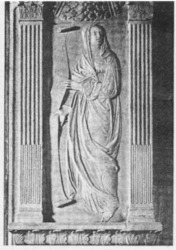
Image of Mnemosyne at the Chapel of the Muses in San Francesco at Rimini. Her daughters are all depicted as well, but she is the only one who wears a veil.
sci-hub.se/10.2307/751273
She may have been more important in pre-literate Greece than later, for memory is a vital skill in oral literature vs written. sci-hub.se/10.2307/283194
The other articles I wanted to read, I could not get to open, sorry.
So my advice is to use her gifts in ways she would approve of.
You will, of course, need to contact her directly in order to discover what exactly that means. I have never communicated with her, so please take my ideas with a grain of salt.
Dream Recall: pray for the ability to remember significant parts of your dreams, and for the ability to interpret them. This may aid you in shadow work or other psychological pursuits, as dreams can be a gateway to the subconscious and your higher self. You can also pray to another deity to receive messages in your dreams to help you be a better person, or give you advantages in your life.
Employ Logic and Reason: Whether it is for school or for your own education, learn about critical thinking and employ those skills. When you read a piece of news, ask yourself these questions: “How does this fit into the context of what I already know? What are the historical influences? What are the future implications of this piece of news? Where could this lead? What is most likely to happen next?” Write down your thoughts. I would follow a blog that did this, that’s for sure.
Employ Logic and Reason by practicing Discernment: You may have already heard about discernment, but it is a vital skill for anybody on this type of spiritual path. You can even become more attuned to the spiritual forces at work around you, by practicing discernment, and more easily notice divine influence, thereby allowing you to thank them properly for their blessings.
Memorize things that are useful to you: Of course, a great thing to memorize would be prayers and poems to the gods. Depending on your line of work and social circle, there may be other topics that come up a lot that you would do well to memorize. When I worked with a lot of Muslims, I memorized certain things about Islam and terrorism so that when I encountered ignorant people, I could gently educate them and challenge some of their more unfortunate beliefs. (This happened more often than you’d think.) You can also memorize epithets and proper pronunciation of the names of the gods.
Learn how to tell a good story. When you capture people’s interest with the stories you tell, give quiet thanks to Mnemosyne and her daughters.
#hellenicpolytheism #hellenism #hellenismos #mnemosyne #mousai #muses #dodekatheism #titans #titanai
20 notes
·
View notes